- Tours & Experiences
- Tailor-made Trips
- Bahasa Indonesia
We are happy to see you again!

Continue with
Or use email.
No Account? Create one
Create account
Already have an account? Sign in
Quickly Sign up with
I agree to Japan Travel's Terms of Service and Privacy Policy . Terms of--> and acknowledge that Japan Travel's Privacy--> applies to me.-->
Email reset password link
Please check your inbox and click the link we will send to you.
Money in Japan
The yen, ATMs, exchanging currencies, and etiquette

When traveling in Japan, visitors will need to use the Japanese currency. In our money guide, we outline the basics of using Japanese yen (¥, JPY), including denominations, exchange rates, and payment methods.
Japanese Yen
The official Japanese currency is the Japanese yen, represented by the currency code JPY and the currency symbol, ¥.
Locally in Japan, yen is pronounced “ en ” in Japanese and often accompanied by its kanji, 円, in everyday use.
The Japanese yen is available in 10 denominations, including six coins and four banknotes that you can read about in-depth in the denomination section.
As of 2024, the number of ways to pay in Japan has proliferated—though cash is arguably still king.
Despite the widening use of credit- and debit cards, Japan is still predominantly considered a cash-based society which especially holds true in rural areas or when visiting small, independent businesses.
It’s always a good idea to have small denominations (10 yen and 100 yen coins, as well as 1,000 yen notes) handy, as many ticket and vending machines will not accept larger denominations (especially 5,000 and 10,000 yen bills).
Having so much cash in your wallet may make you feel uneasy at first, but Japan does have one of the lowest crime rates in the world. While nothing beats being careful, chances are you’re more likely to lose money by dropping or leaving it, rather than it getting stolen.
- If you are holding too many coins, note that a lot of supermarkets or convenience stores (7-eleven, Family Mart, Lawson etc) have payment kiosks that let you use denominations down to 1 yen allowing you to quickly deposit them.
Credit/Debit Cards
Credit and debit cards are increasingly accepted across Japan, but always try to check in advance whether a place solely accepts credit cards (also often indicated near the shopfront for any business), as well as abide by these tips:
Even if you decide to mainly use a credit card, it is still recommended to carry or have access to sufficient cash.
Most credit card companies will charge a surcharge (usually 1–3%) for foreign-issued cards. A Wise card lets you avoid foreign transaction fees and convert at the real exchange rate, even when using local ATMs.
The most commonly accepted cards are MasterCard, Visa, and JCB, followed by American Express and Diner’s Club.
- Credit card readers typically support one of swipe, insert or tap/contactless (referred to as "touch" in Japan). In some cases, you may still asked to sign for payments but it is rare for the vendor to check the authenticity of this (often they'll have already returned the card).
Transit IC cards, such as Suica and PASMO , are commonplace in Japan's major cities. The 10 main IC operators across Japan also include Icoca, Pitapa, Toica, Manaca, Kitaca, Suogca, Nimoca and Hayakaken. They are all interoperable, meaning you can use one card of another IC card's network, but you cannot travel between IC card areas on a single card.
They are predominantly used for train and bus fares, but can also be used for payments in urban areas with good transportation links, including for use at vending machines, station kiosks, shops, cafes and restaurants.
Both iPhone and Android support digital versions of Suica and Pasmo via their official apps for easy contactless payment. Android devices need to support Osaifu-Keitai/FeliCa (only installed on phones sold within Japan) whereas Apple devices including iPhone 8 or later and Apple Watch Series 3 or later should work fine.
Digital Payments
If you have a Japanese phone number, a number of local apps are available to you. Digital payment apps can typically be topped up at ATMs or via connecting a bank account, credit card or mobile service provider. Payments can be made via contactless terminals or having a vendor scan your QR code. Services include:
- R (Rakuten) Pay
Getting Yen
Two common ways to withdraw yen are through Japan Post and 7-Eleven ATMs:
Japan Post ATMs are located at more than 26,000 locations nationwide (denoted with the “JP” logo); each post office will have at least one, while they can also be found at shopping malls and supermarkets. Service hours vary according to location; large post offices in major cities will have longer hours than small ones in rural areas. English services are also available
7-Eleven (Seven Bank) has over 20,000 ATMs across Japan, located at 7-Eleven convenience stores. Services are offered virtually 24/7 and currently available in 12 languages (Japanese, English, Korean, Simplified Chinese, Portuguese, Chinese traditional, Thai, Malay, Indonesian, Vietnamese, French, and German).
E-net ATMs in Family Mart can also offer a service to international cards including MasterCard.
Be aware of service charge fees that may also rise for transactions made outside traditional operating hours (usually 9am–5pm on weekdays):
MasterCard ATMs in Japan
Visa Card ATM Locator
Wise in Japan
If you need to transfer funds to a local account or to have convenient access to currency during your trip, Wise (formerly TransferWise) allows you to do so — economically, quickly and easily.
Together with the app, a Wise card can help give you more spending flexibility in Japan while always knowing you'll get competitive exchange rates and the ability to set currency alerts or auto-convert currency.
If you don't have an account, sign-up to Wise today to get a fee-free transfer of up to 75,000 JPY!
Exchanging Currencies
For a general idea of what current exchange rates are like, check out XE Currency Converter or Wise's own Currency Converter .
All places with an “Authorized Foreign Exchange” sign can exchange currencies; these places include banks and money changers (such as Travelex ), which can be located at airports and in major cities.
- Banks are usually open from 9am to 3pm on weekdays.
Hotels and large department stores may offer currency exchange services, although with extra fees and less favorable rates.
Traveler's Checks
Due to the relatively limited number of ATMs that support foreign-issued cards, traveler’s checks are more useful than you’d think in Japan.
Traveler's checks tend to carry more favorable rates than money changers and ATMs, and are accepted by leading banks, hotels, ryokan , and stores in major cities, but very few places elsewhere.
- Do not pay with a check drawn from a foreign bank; as many Japanese places will either charge large extra fees or not accept them at all.
Money Etiquette and Things to Know
Consider the following hints and tips when using money in Japan:
Tipping : Japan has a no-tip policy . Leaving a tip at a restaurant or a taxi driver will often result in them returning you the money (If you do want to leave a tip—such as for a maid at a ryokan or a tour guide—put the money in an envelope and give it to them in person).
Handling cash : Most restaurants, shops, and even taxis, will provide a small tray for you to put money on, instead of giving it directly to the cashier. This is also often used when receiving small change.
Consumption tax : When paying for goods in Japan, it is fairly common to see the pre-tax price advertised although, by law, the final price should always be indicated. Consumption tax is currently 10%, but for cafes, restaurants or other businesses serving food to take away the tax is 8%.
When to exchange : Although it depends on the currency, it is generally better to exchange yen in Japan than in your home country, due to a lower commission and better exchange rate. Similarly, you'll typically get better rates away from the major airports.
Denominations
Read more in detail about each of the Japanese yen's coins and bills.
1,000 yen ( sen-en )
The design is printed in blue.
The front of the current banknote features a portrait of Hideyo Noguchi, a bacteriologist famous for his groundbreaking research on syphilis and yellow fever.
The back of the current banknote features Mount Fuji and Lake Motosu , flanked with cherry blossoms.
2,000 yen ( nisen-en )
The design is printed in green.
It was issued in 2000 to commemorate the millennium, as well as the 26th G8 Summit, held in Okinawa.
The front of the banknote features the Shurei-mon, one of the main gates of the Okinawan castle Shuri-jyo .
The back features a scene from the Tale of Genji and a portrait of the author, Murasaki Shikibu.
Due to its limited number, 2,000 yen bills are considered a novelty in Japan.
5,000 yen ( gosen-en )
The design is printed in purple.
The current design of the front features Ichiyo Higuchi, the first prominent Japanese female author.
The current design of the back is the “Kakitsubata-zu,” a painting of irises by Ogata Korin.
10,000 yen ( ichiman-en )
The design is printed in brown.
The front of the current banknote features a portrait of Fukuzawa Yukichi, the founder of Keio University.
The back features the phoenix statue from Byodo-in .
- Share on Facebook
- Share on Twitter
- Copy link to share
By Tom Roseveare
Creative Director @ Japan Travel

Top Articles
- Recommended

Extraordinary Experiences in the Great Nature of Izu-Oshima, the Closest Island From Central Tokyo

Tokyo One of the World's Most Walkable Cities

2024 Grand Sumo Tournaments

The Ultimate Guide to Thrifting in Tokyo

2-Day Hachijojima Retreat: Recharge Your Mind and Body

Tokyo Takes 2nd Place on Top Coffee Cities List

Tokyo Named #1 City for Food and Drink

Mount Omuro

Only in Japan: Character Cafes in Tokyo

Guide to Bringing Medicines Into Japan

Your Name: Real-Life Locations in Tokyo

Hachiko Statue in Shibuya

Iwatayama Monkey Park

Shibuya Crossing

Daikoku Car Meet

Guide to PASMO Cards

Guide to Suica Cards

Kanamara Penis Festival

Japanese Urban Legends
More from this category, guide to bringing medicines into...
By Japan Travel

Guide to Earthquakes in Japan
By Edward Yagisawa

Getting a Tattoo in Japan
By Serena Ogawa

Emergency Contact Information..
Join the discussion.

Let us know how we can help.
Help us improve JapanTravel.com
We welcome any suggestions regarding this content. Your feedback is confidential and will be used to help improve this page.
Suggest an edit
https://en.japantravel.com/guide/money-in-japan/22045
Thank you for your support!
Your feedback has been sent.
A Traveler's Guide to the Yen
Cash Transactions in Japan
In 1871—the same year that the Japanese mint was founded in Osaka —the Meiji government officially adopted the yen as Japan’s currency, and since then the yen has remained its primary form of money. The yen is the third most traded currency in the foreign exchange market after the United States dollar and the euro.
The yen, which means "round object" or "circle" in Japanese, comes in four denominations of bills while coins come in six denominations.
Coins were first minted in 1870. They feature images such as flowers, trees, temples, and rice. Unlike many coins worldwide, Japanese coins are stamped with the year of the current emperor’s reign rather than a year based on the Gregorian calendar. Coins have been made of nickel, cupro-nickel, bronze, brass, and aluminum. The one yen coin is entirely made of aluminum, it can float on water.
Bills come in 10,000 yen, 5,000 yen, 2,000 yen, and 1,000 yen quantities while coins come in 500 yen, 100 yen, 50 yen, 10 yen, 5 yen, and 1 yen, and all bills and coins are different sizes with larger amounts correlating to larger sizes. Banknotes were first made in 1872, two years after coins were first minted. They feature images of Mount Fuji, Lake Motosu, flowers, and many animals such as lions, horses, chickens, and mice. Japanese bank notes are some of the world's most difficult bills to counterfeit .
If you are planning to travel to Japan, you'll need to understand the basics of the Japanese yen in order to properly make purchases including paying for your meals and accommodations, shopping in one of the many commercial districts of the country, or even paying for your cabs and services in Japan's many cities.
Money Tips for Travelers to Japan
In Japan , traveler's checks and some foreign currencies can be used at most large hotels and duty-free shops; however, most businesses only accept the yen. More and more places including shops, hotels, and restaurants take credit cards. With a weaker yen, the easing of visa requirements, and the 2020 Tokyo Olympic and Paralympic Games bringing more tourists, there will be even more places that will start accepting credit cards.
Whether you have a credit card or not, you really need to have some local currency. For the best rates, exchange your money at the airport, post office, or authorized foreign exchange bank before you start your Japanese adventure.
You must have cash when traveling to small cities and rural areas. It’s also preferred to use cash if the price is a small amount. In other words, you will want to have small denominations for taxis, tourist attractions, small restaurants, and shops. Coins are great to have on hand for travel lockers, public transportation, and vending machines.
Do not rely on ATMs. Most Japanese ATMs do not accept foreign cards and might be closed at night or on the weekend. You should be able to find an ATM that you can use in 7-Eleven stores, the airports, post offices, or other international establishments that accommodate foreign travelers. In Japan, IC "integrated circuit" cards, which are prepaid transportation cards, can have value added to them and are handy to have for public transportation fares, lockers, and vending machines.
Average Costs
The value of the yen fluctuates like the dollar. But, to give you a sense of what a meal costs in Japan, you can buy a bowl of ramen for 500 to 1,000 yen. Although, a dinner might cost you about 3,000 yen. A subway ride costs about 200 yen. A taxi ride averages about 700 yen. To rent a bike for a day costs about 1,500 yen. Entrance fees to museums and attractions cost about 300 to 1000 yen per person.
Money in the Philippines
How to Stay at a Ryokan
Currency in Egypt: Everything You Need to Know
Vital Information for the First-Time Visitor to Thailand
Currency Converters
Cuba Guide: Planning Your Trip
The 10 Best Places to Shop in Tokyo
Kyoto Guide: Planning Your Trip
Your Trip to the Czech Republic: The Complete Guide
Mérida: Planning Your Trip
Money and Money Changers in Bali
Ho Chi Minh City Guide: Planning Your Trip
Your Trip to Martinique: The Complete Guide
Money Suggestions for Travelers in Vietnam
The Currency in Kuala Lumpur
The Currencies of Ireland
Niigata's Murakami City: Enjoy Fun Events, Sightseeing, and Local Cuisine!
We use cookies to improve our contents. Check the detail and update your settings here .
We use cookies to improve our services.
For more details, please click here .

- Change setting
- Food & Drink
- Accommodation
- Things To Do
- All the categories
Transportation
- Weather & Seasons
- Long-Term Stay
- Travel Tips
- Event Tickets
- About MATCHA
- Company Profile
- MATCHA Special Features
Japanese Currency Guide: All About Bills And Coins

This article contains information about the Japanese yen: bills and coins in circulation, how much they value, and other helpful facts about Japanese money.
About the Japanese Yen: Bills and Coins in Japan

You will need to use Japanese currency when traveling in Japan. This article provides basic information regarding the Japanese yen : denominations currently in use, typical exchange rates, and more.
Japan uses the Japanese yen, with the international symbol being ¥. Currently, there are 1,000 yen, 2,000 yen, 5,000 yen and 10,000 yen banknotes in circulation. Coins come in one-yen, five-yen, 10-yen, 50-yen, 100-yen and 500-yen denominations.
Looking for reasonably-priced accommodation in Japan? Check out MATCHA's discount coupons! Book flights, bullet train tickets, and accommodation in Japan at the best rates! Check our booking page!
Yen Exchange Rates
How much is your country's currency worth in yen? Look below for currency equivalent estimates (current as of September 2020).
Foreign Currency Exchange
A must for railway users! Introducing a convenient spot right in the station where you can get your hands on some Japanese yen. There are around seven foreign currency exchange counters and ten ATMs at JR East Japan stations in the greater Tokyo area. For more information, please visit this page .
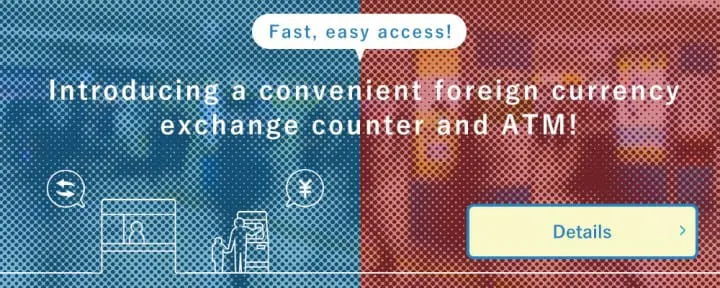
Credit, Debit, and Other Cashless Options in Japan
Although many businesses and transactions remain done via cash in Japan, electronic payment is becoming much more popular countrywide as of September 2020. Department stores and chain supermarkets accept credit and debit cards. Convenience stores and other businesses are also starting to accept electronic payments like ApplePay, along with a number of domestic payment apps and services.
Another popular way of paying is via IC card ––using your Suica, Pasmo, Icoca, or other prepaid transportation cards to shop.
It is still important to carry around cash, but you may not need as much as you think you do.

Is Japan Going Cashless? A Guide To Paying Electronically In Japan
A Closer Look at Japanese Yen
Japanese banknotes and coins come with various distinct markings. We have compiled a brief overview here for your reference.
The 10,000 Yen Bill

The front of the 10,000 yen bill is adorned by an image of the samurai, Yukichi Fukuzawa, who was also an intellectual and an educator in the mid-to-late 1800s in Japan.
A 10,000 yen bill in your wallet is enough for a day of fun out in Tokyo or the city. You can enjoy a moderately-priced lunch, dinner, head to a museum, and go shopping for souvenirs with this amount of money.
The 5,000 Yen Bill

The 5,000 yen bill is of a violet hue and features Ichiyo Higuchi, Japan's first prominent female writer. She specialized in short stories and poetry.
On average, it costs around 5,000 yen per person when dining out at well-known restaurants and or spending an evening with drinks at an izakaya. If you want to have lunch at a traditional sit-down Japanese restaurant or sushi restaurant, you can expect to spend 5,000 yen.
The 2,000 Yen Bill

The design on the 2,000 yen bill features the Japanese literary classic, "The Tales of the Genji," and its author, Murasaki Shikibu. Making up just around 0.9% of the bills in circulation in Japan, you will see this bill rarely, if at all. Be careful because it cannot be used in vending machines.
If you want to indulge yourself and splurge at lunch in Tokyo, 2,000 yen is just about right. You might also want to charge 2,000 yen on your IC card for transportation if you are traveling more than an hour on a local train.
The 1,000 Yen Bill

The 1,000 yen bill features the bacteriologist, Hideyo Noguchi, on the front.
With 1,000 yen, you can buy a casual lunch at a chain restaurant. One option is a teishoku , or lunch sets, which typically contain rice, a main dish, soup and similar menu items. You can also enjoy a bowl of ramen for 1,000 yen or less.
The 500-Yen Coin

The 500 yen coin is actually the most recent yen coin to be minted in Japan. It is the largest of the yen coins, and you can feel its weight even in your wallet.
Most bento boxes sold at convenience stores cost around 500 yen, and are a great option for someone trying to save money on food expenses. Inputting the keywords "one coin" into a search engine will return an extensive list of places where you can eat lunch for a single 500 yen coin. For those seeking a pick-me-up, a latte or coffee drink from an upscale cafe in Japan will be priced at around 500 yen.
The 100-Yen Coin

The 100-yen coin is the Japanese equivalent of the one-dollar bill. It is the most commonly used coin on a day-to-day basis and has a wide variety of uses in daily shopping.
100-yen coins are easiest to spend at vending machines, when paying at convenience stores, and also when playing games at arcades. At McDonald's, items on the "100-Yen Mac" menu, such as regular hamburgers, soft-serve ice cream, and small drinks, can be purchased with a 100-yen coin. Items priced at 100 yen line the shelves at 100- yen stores : food, clothing, household goods and more. A basic omikuji paper fortune at a shrine or temple will usually cost 100 yen.
The 50 Yen Coin

The chrysanthemum , cultivated for its appeal as a decorative flower, can be seen on the 50-yen coin. When first released, 50-yen coins lacked holes in the middle. However, to make it easier to distinguish them from 100 yen coins at a glance, holes were incorporated into the design.
50-yen coins can be used to buy individually-packed candy known as " dagashi ," and these coins can also be used to buy discount drinks at places like Don Quijote .
The 10-Yen Coin

The design of the Phoenix Hall at Byodouin Temple in Kyoto , which is registered as a UNESCO World Heritage Site, is featured on the bronze 10-yen coin.
A 10-yen coin doesn't buy much on its own, but it can be convenient can charge an IC card with 10 yen coins and to use them at vending machines. In case of an emergency, you can use 10-yen coins at public payphones, which only accept 10 yen and 100 yen coins. You can get about 60 seconds of talk time during the day and about 80 seconds of talk time at night.
The Five-Yen Coin

Like the 50 yen coin, the design of the five-yen coin has a hole in the center. The words in Japanese for "five yen" and for "destiny" are both pronounced as "go en," so five yen coins are said to be lucky.
When visiting a temple or shrine in Japan , it is custom to make an offering using the five-yen coin due to this. You cannot use five-yen coins at vending machines, but cashiers in Japan will accept them.
The One Yen Coin

The one yen coin is made of aluminum and is extremely light, weighing in at just one gram. It is said that producing a one yen coin costs three yen. There is a saying in Japan that "he who laughs at one yen will weep at one yen," meaning that all money has value, even something as small as a one yen coin.
One yen coins cannot usually be used at vending machines, ticket machines, and other automatic payment machines. However, feel free to use one yens when you are shopping in-person.
Get Familiar with Japanese Money!
This concludes our feature on the Japanese yen. We hope you found it useful. Enjoy shopping in Japan!

Need Japanese Yen? Six Ways to Get Cash in Japan
Download the MATCHA app for Japan travel : Apple Store | Google Play Store
The MATCHA editorial department. Our articles feature useful travel information for visitors to Japan, from how-to guides to recommended places to visit.
Related topics
Top articles, related article.

Food Expenses for Travel in Japan: 1,000 Yen Meals and Budget Tips

Kyoto: 50 Things to Do, Places to Visit, Hotels, and Travel Tips

Transportation Expenses In Japan: Cost Of Trains, Buses, Taxis, And Rental Cars

Ready to Go to Japan? A Guide to Visas and Immigration Procedures

Akihabara Travel Guide: Visit Japan's Electronics And Otaku Center!
Start planning your trip
Special Features

Popular Searches
Latest news.

Showa Kinen Park Flower Festival 2024: Enjoy Nemophila, Tulips, and More!

A Must for Nature Lovers! Win a Free Stay at Unzen Amakusa National Park

A World of Light and Color! Van Gogh Alive in Japan 2024

Cherry Blossom Light-up in Tokyo! Yomiuri Land's Jewellumination

Cherry Blossoms and Sky Lanterns! Aichi Hanami Lights 2024

Japan's Public Holidays and Long Weekends in 2024

Tokyo's Fall Foliage: Top 10 Gardens and Parks in 2023

How to Travel to Kyoto From Osaka: The Fastest and Cheapest Ways

How to Travel to Osaka from Tokyo in 2024: Price Comparison

Shinkansen: How to Buy Bullet Train Tickets
New articles.

2-day, 1-night itinerary [Chichibu City, Saitama Prefecture] To the Shibazakura Hills (Hiyoshi Inn & HIMIDORI)

Kyoto's Festivals: 13 Vibrant Events to Enjoy Year-Round

Kirishima: 7 Things to Do, Hot Springs, Hiking, and Breweries

Kobe Beef: Characteristics and 5 Recommended Restaurants

The cherry blossom season is over and the season of fresh greenery is upon us. Gold-Guide will match you with an excellent interpreter guide!
- Destinations
Practical GUIDE to JAPANESE CURRENCY for TOURISTS (7 Tips You Can’t Miss)
This site uses affiliate links, meaning that if you make a purchase through our links, we may earn an affiliate commission.
Welcome to Japan, a captivating destination known for its rich culture, exquisite cuisine, and fascinating traditions. As you embark on your journey through this incredible country, it’s essential to familiarize yourself with Japanese currency to ensure a smooth and hassle-free experience.
In this guide to Japanese currency for tourists , we will walk you through everything you need to know about handling money in Japan.
Whether you are strolling through the bustling streets of Tokyo, exploring historic temples in Kyoto, or indulging in authentic street food in Osaka, understanding Japanese currency is vital for making purchases, navigating transportation systems, and engaging in everyday transactions.
From the iconic yen notes and coins to payment methods, exchange rates, and money-saving tips, we have got you covered.

You Might Also Like:
Ultimate 16-DAY JAPAN ITINERARY for Marvelous Culture, History, and Nature
Amazing 3 DAYS in TOKYO (Thrilling Itinerary with 21 Things You Can’t Miss)
8 THINGS You Can’t Miss – Perfect 2 DAYS in KYOTO
Check Out All the Posts about Japan:
Japan Travel Guide
- 1. The Japanese Yen - Denominations of Yen Banknotes and Coins
- 2. Currency Exchange - Best Places to Exchange Your Money
- 3. Cash or Card? Payment Methods in Japan
- 4. Budgeting Tips for Your Trip to Japan
- 5. Etiquette and Cultural Considerations When Making Payments and Tipping in Japan
- 6. Safety and Security Tips for Handling Money in Japan
- 7. Useful Japanese Phrases for Currency and Money Exchange
- 8. Intrepid Scout's Tips for Guide to Japanese Currency for Tourists
The Japanese Yen - Denominations of Yen Banknotes and Coins
When it comes to Japanese currency, the unit of exchange is the yen (¥). Understanding the yen’s denominations and features is essential for handling money in Japan. Let’s explore the basics:
- Yen Banknotes: The yen banknotes come in various denominations: ¥1,000, ¥2,000, ¥5,000, and ¥10,000. Each note showcases different historical figures, landmarks, or cultural motifs. Familiarize yourself with their appearance and respective values to easily identify and use them during transactions.
- Yen Coins: Yen coins are available in six denominations: ¥1, ¥5, ¥10, ¥50, ¥100, and ¥500. While the ¥1 and ¥5 coins are less commonly used, the rest are widely circulated. Be sure to have a handy coin purse or wallet compartment to keep them organized.
- Unique Features: Japanese banknotes incorporate several security features to prevent counterfeiting. These features include watermarks, holographic strips, microprinting, and tactile marks for the visually impaired. Taking a moment to familiarize yourself with these security features can help you authenticate banknotes and avoid counterfeit currency.
- Currency Symbols: The symbol for the Japanese yen is “¥,” which is often used to denote prices or amounts. It’s worth noting that the yen symbol is different from the dollar symbol “$” or the euro symbol “€.”
By understanding the denominations, appearance, and unique features of Japanese yen banknotes and coins, you will be better prepared to handle money confidently during your stay in Japan.
1,000 yen bill – this bill has been in use since 1945 and it is the lowest value yen bill. The front side of the bill has the image of the legendary regent and politician under Empress Suiko, Prince Shōtoku. The reverse side bears a drawing of Mt. Fuji and cherry blossoms.

5,000 yen bill – the front side has a portrait of Ichiyo Higuchi, a Meiji-era writer and poet. The reverse side depicts “Kakitsubata Flowers”, from a folding screen by Korin Ogata.

10,000 yen bill – the front side of this note has a portrait of Yukichi Fukuzawa, a Meiji-era philosopher and founder of Keio University. The reverse side has a drawing of the hoo (Chinese phoenix) in the Hall of the Phoenix, Byodoin temple.
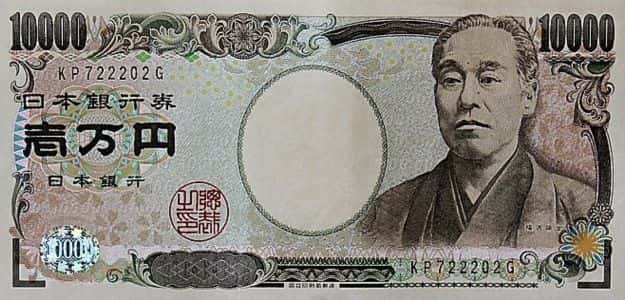
Japanese coins are a fascinating aspect of the country’s currency system and hold a rich cultural significance. With their unique designs and varying values, these coins play an essential role in everyday transactions and reflect Japan’s history and traditions
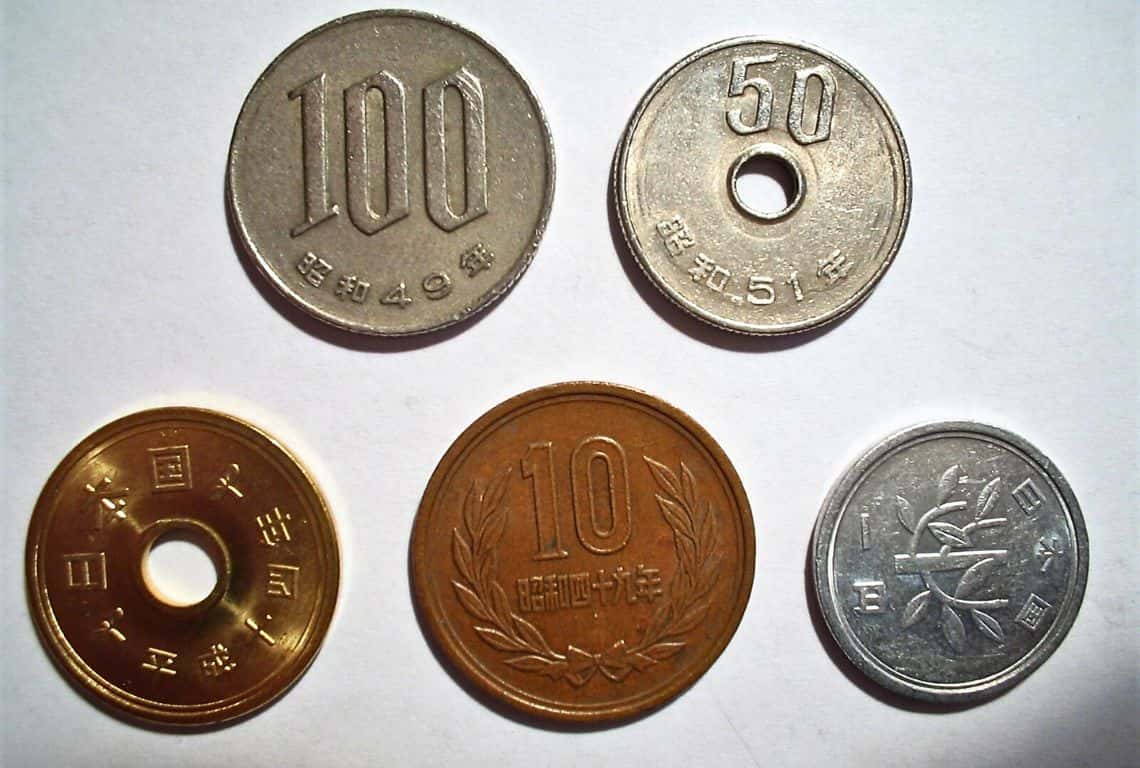
Japanese Coins / Guide to Japanese Currency for Tourists
Currency Exchange - Best Places to Exchange Your Money
When traveling to Japan, it’s essential to exchange your home currency for the Japanese yen. Here are some key points to consider when it comes to currency exchange:
- Exchange Locations: Currency exchange services can be found at various locations, including airports, banks, post offices, and dedicated currency exchange offices. Airports often have multiple currency exchange counters, making it convenient to obtain yen upon arrival. Major train stations and tourist areas may also offer currency exchange services.
- Exchange Rates: Exchange rates fluctuate, so it is wise to compare rates from different providers to get the best value for your money. Keep in mind that currency exchange services may charge a commission or fee, which can vary between providers. Additionally, rates at airports and hotels may be slightly less favorable, so it is advisable to exchange a small amount initially and seek better rates elsewhere.
- ATMs: ATMs in Japan are widely available, and many accept foreign debit and credit cards. Look for ATMs labeled with international card logos such as Visa, Mastercard, or Plus. Convenience stores, post offices, and 7-Eleven outlets often have ATMs that support foreign cards.
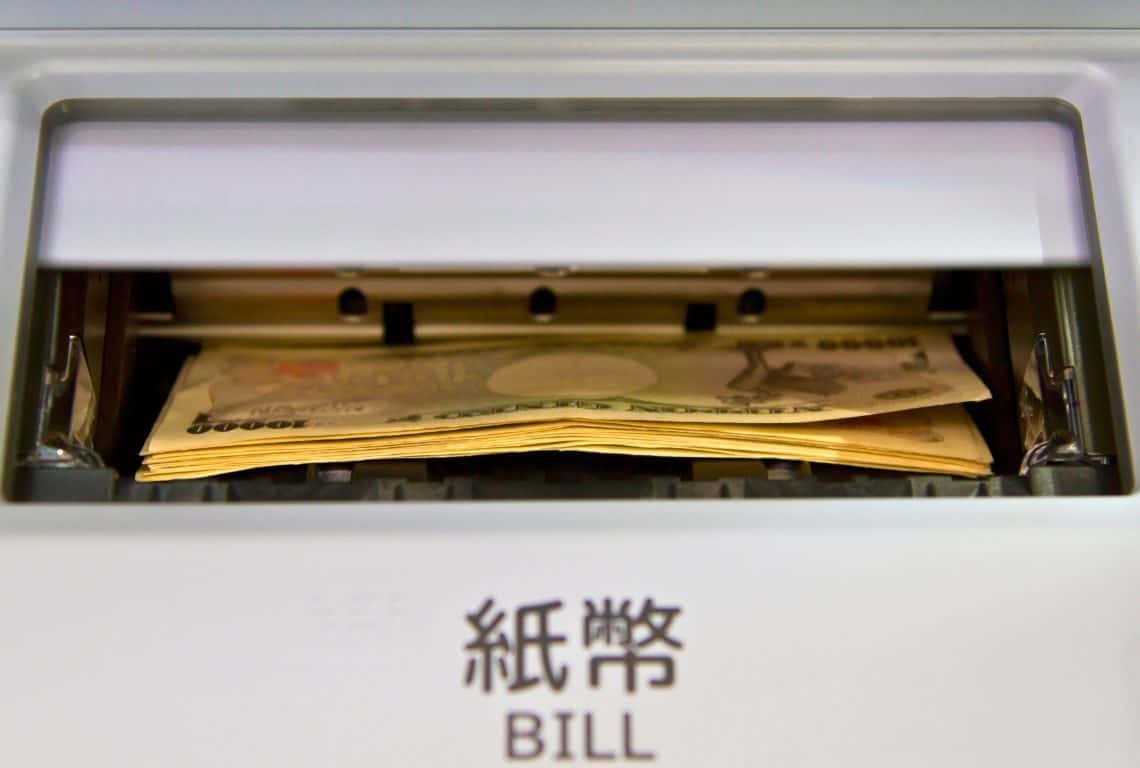
- Prepaid Travel Cards: Consider obtaining a prepaid travel card, such as a Visa or Mastercard prepaid card, before your trip. These cards can be loaded with yen in advance and used for purchases or ATM withdrawals during your stay in Japan. Prepaid travel cards often offer competitive exchange rates and can provide a convenient and secure way to manage your money while traveling.
- Notify Your Bank: Before traveling, inform your bank or credit card company about your trip to Japan. This ensures they are aware of your international transactions and reduces the chances of your card being blocked for suspicious activity.
Remember to keep your exchanged yen and receipts in a secure place. It is advisable to carry a mix of cash and cards for flexibility. In the next section, we will explore the different payment methods commonly used in Japan, providing you with further options for managing your expenses.
Cash or Card? Payment Methods in Japan
In Japan, you will encounter a variety of payment methods, including cash and electronic payment options. Understanding how to use these methods will greatly enhance your convenience during your travels. Let’s explore the common payment methods in Japan:
- Cash: Cash is widely accepted throughout Japan, making it essential to carry yen with you. Many small businesses, local markets, and street vendors may only accept cash payments. Additionally, it is customary to pay with cash when visiting traditional establishments, such as ryokans (traditional inns) or certain restaurants.
- Credit and Debit Cards: Credit and debit cards are accepted at most major establishments, including hotels, department stores, restaurants, and larger retailers. International credit cards, such as Visa, Mastercard, and American Express, are commonly accepted. However, it’s worth noting that some smaller businesses, street food stalls, or local shops may only accept cash. Always carry some cash as a backup, especially when exploring more remote areas or local markets.
- ATMs: As mentioned earlier, ATMs in Japan are widely available, and many accept foreign debit and credit cards. ATMs can be found at post offices, convenience stores, and banks. However, be aware that not all ATMs are accessible 24/7, particularly in smaller towns or rural areas. Additionally, some ATMs may charge a fee for international transactions, so it’s advisable to check with your bank regarding any applicable fees.
- Cashless Payment Systems: Cashless payment systems, such as Suica and Pasmo, are prevalent in Japan. These rechargeable smart cards can be used for transportation, shopping, and even vending machines. Simply load money onto the card and tap it on the designated readers. They are particularly convenient for commuting on trains, buses, and subways. Many stores, restaurants, and convenience stores also accept mobile payment methods like Apple Pay or Google Pay.
- Currency Conversion Fees: When using credit or debit cards, it’s essential to be aware of any currency conversion fees that may be charged by your card issuer. Some banks charge a percentage-based fee for foreign currency transactions, so it’s advisable to check with your bank beforehand to understand the applicable fees.
Having a combination of cash and cards, along with familiarity with cashless payment systems, will ensure you are well-prepared to handle various payment situations during your time in Japan. In the next section, we will provide tips on budgeting and managing your expenses effectively.
Budgeting Tips for Your Trip to Japan
Managing your expenses and budgeting wisely are crucial aspects of any trip. Here are some practical tips to help you budget effectively while exploring Japan:
- Research Average Costs: Before your trip, research and familiarize yourself with the average costs of accommodation, meals, transportation, and attractions in the cities or regions you plan to visit. This will give you a baseline for budgeting and help you allocate your funds accordingly.
- Accommodation Options: Japan offers a wide range of accommodation options to suit different budgets. From luxurious hotels to budget-friendly guesthouses and capsule hotels, you can find something that aligns with your financial plans. Consider exploring different accommodation booking platforms to find the best deals and discounts.
- Dining Options: Japanese cuisine is renowned worldwide, and trying various local dishes is an integral part of the experience. To manage your dining expenses, explore a mix of dining options. While high-end restaurants can be expensive, you’ll also find affordable and delicious meals at local eateries, street food stalls, and convenience stores. Don’t miss the opportunity to indulge in authentic and affordable sushi, ramen, and bento boxes.
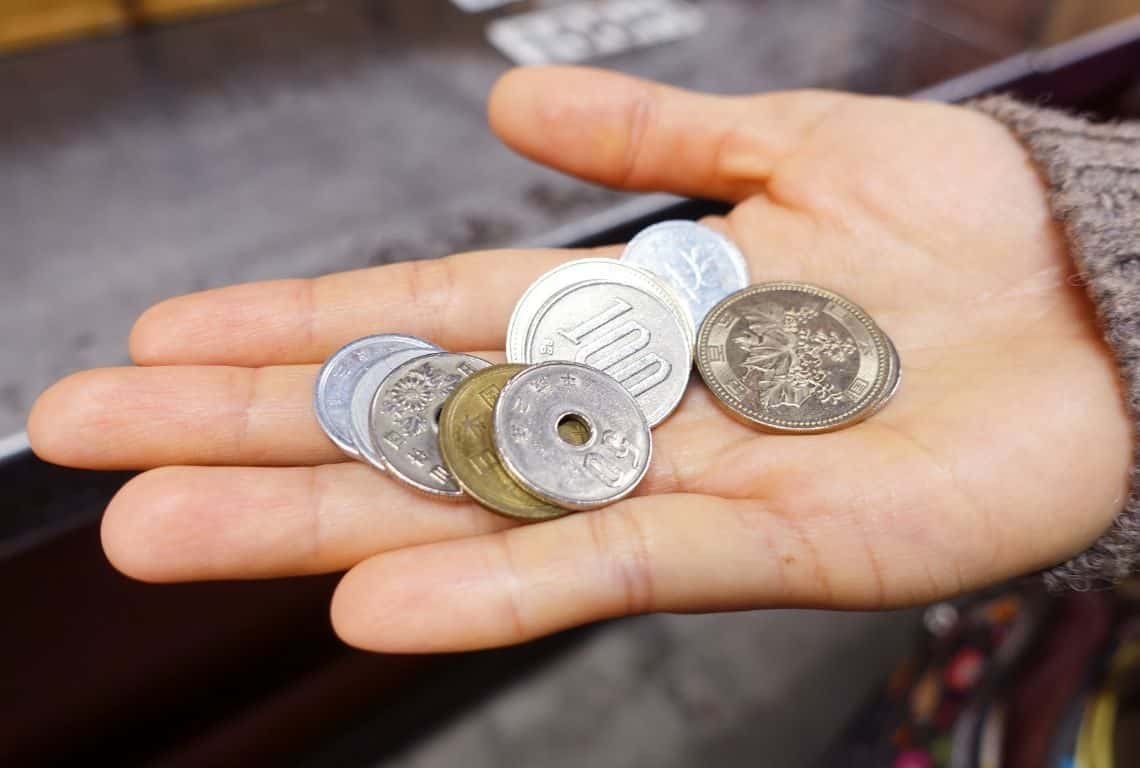
- Transportation: Getting around in Japan can be convenient and efficient, but it is essential to factor transportation costs into your budget. Consider purchasing a Japan Rail Pass if you plan to travel extensively by train, as it offers unlimited travel on Japan Railways (JR) lines for a fixed period. For shorter distances or within cities, public transportation like subways and buses provide cost-effective options.
- Free and Low-Cost Activities: Japan offers numerous free or low-cost activities that allow you to immerse yourself in the culture and attractions without breaking the bank. Explore public parks, gardens, temples, and shrines, many of which offer serene and picturesque settings. Take advantage of free walking tours, visit local markets, and participate in cultural events or festivals.
- Money-Saving Tips:
1. Purchase a prepaid travel card for convenient and secure transactions with favorable exchange rates.
2. Take advantage of discounted tourist passes for transportation or attraction entry.
3. Look for set menus or lunchtime specials at restaurants, which often offer better value for money.
4. Use discount coupons or vouchers available through guidebooks, websites, or tourist information centers.
Remember to track your expenses throughout your trip to stay within your budget. By planning ahead and making informed choices, you can enjoy a fulfilling experience in Japan without overspending. In the next section, we will discuss important etiquette and cultural considerations related to money in Japan.
Etiquette and Cultural Considerations When Making Payments and Tipping in Japan
Understanding the etiquette and cultural norms surrounding money in Japan is important to ensure respectful interactions and to avoid any unintended faux pas. Here are some key considerations:
- Politeness in Transactions: When making a payment or receiving change, it is customary to use both hands to offer or receive money, especially when dealing with cash in traditional establishments. This gesture demonstrates respect and politeness. Additionally, saying “arigatou gozaimasu” (thank you very much) after a transaction is appreciated.
- Tipping Culture: Unlike in some other countries, tipping is not a common practice in Japan. In fact, leaving a tip may be seen as confusing or even impolite. Service charges are typically included in bills at restaurants or hotels, so additional tipping is not necessary. Simply paying the stated amount is sufficient.
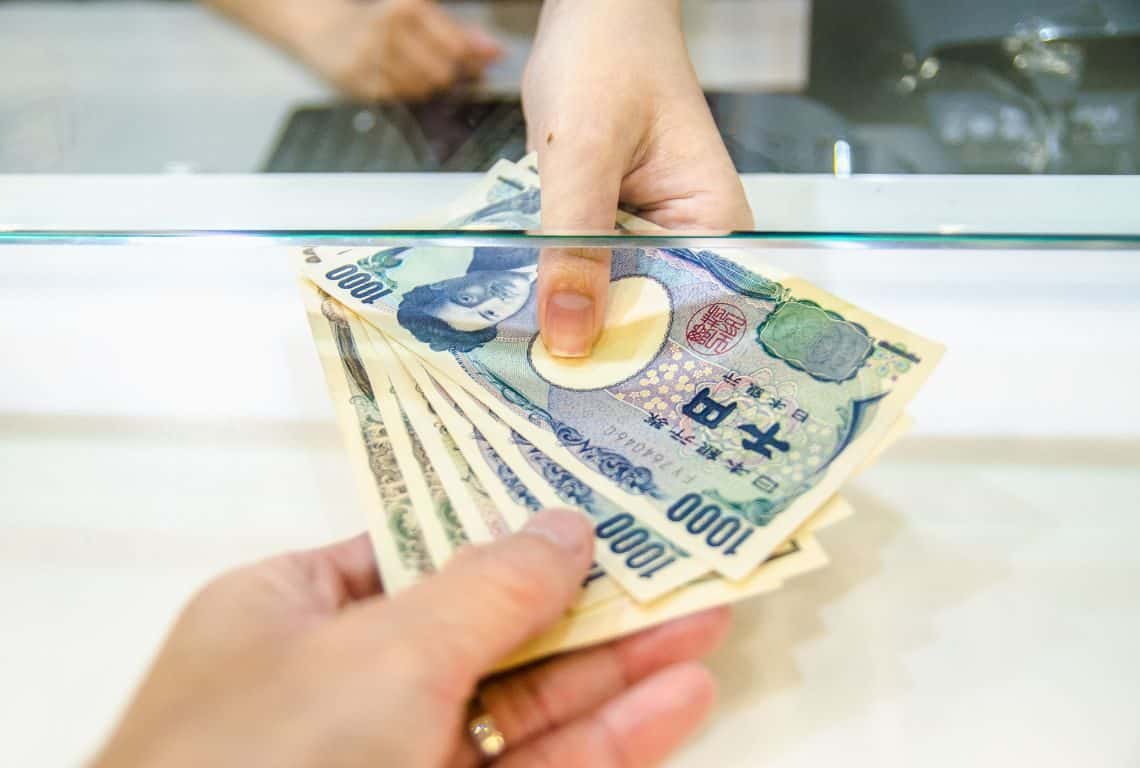
- Handling Cash in Public: When handling cash in public, it is considered polite to do so discreetly and avoid displaying large amounts. Using a wallet or a small money pouch to keep your cash organized and secure is advisable. This practice ensures personal safety and minimizes any potential unwanted attention.
- Shopping and Bargaining: While bargaining is not common in most retail settings in Japan, there may be some exceptions in certain markets or when purchasing high-value items. However, it is important to approach bargaining politely and respectfully, keeping in mind that it may not always be acceptable or successful. The marked prices in stores are generally considered final.
- Receiving Change: When receiving change, it is customary to inspect it briefly and acknowledge the amount received with a nod or a quick “arigatou gozaimasu.” This simple act shows attentiveness and appreciation.
By being mindful of these etiquette guidelines, you can navigate money-related interactions with grace and respect while enjoying a positive cultural experience in Japan.
In the next section, we will provide tips to ensure the safety and security of your money during your travels.
Safety and Security Tips for Handling Money in Japan
Keeping your money safe during your travels is essential. Here are some tips to ensure the safety and security of your money while in Japan:
- Carry a Secure Wallet or Money Pouch: Invest in a secure wallet or money pouch that has features like RFID-blocking material to protect your credit card information from electronic theft. Opt for a design that can be discreetly tucked away under your clothing to minimize the risk of pickpocketing.
- Divide Your Money: Avoid carrying all your cash in one place. Split your money into multiple pockets, wallets, or bags to have backup funds in case of loss or theft. This way, you’ll still have access to money even if one of your belongings is misplaced or stolen.
- Use Hotel Safes: Take advantage of the in-room safes provided by hotels to store your extra cash, credit cards, and other valuables. It’s a secure option that adds an extra layer of protection to your belongings.
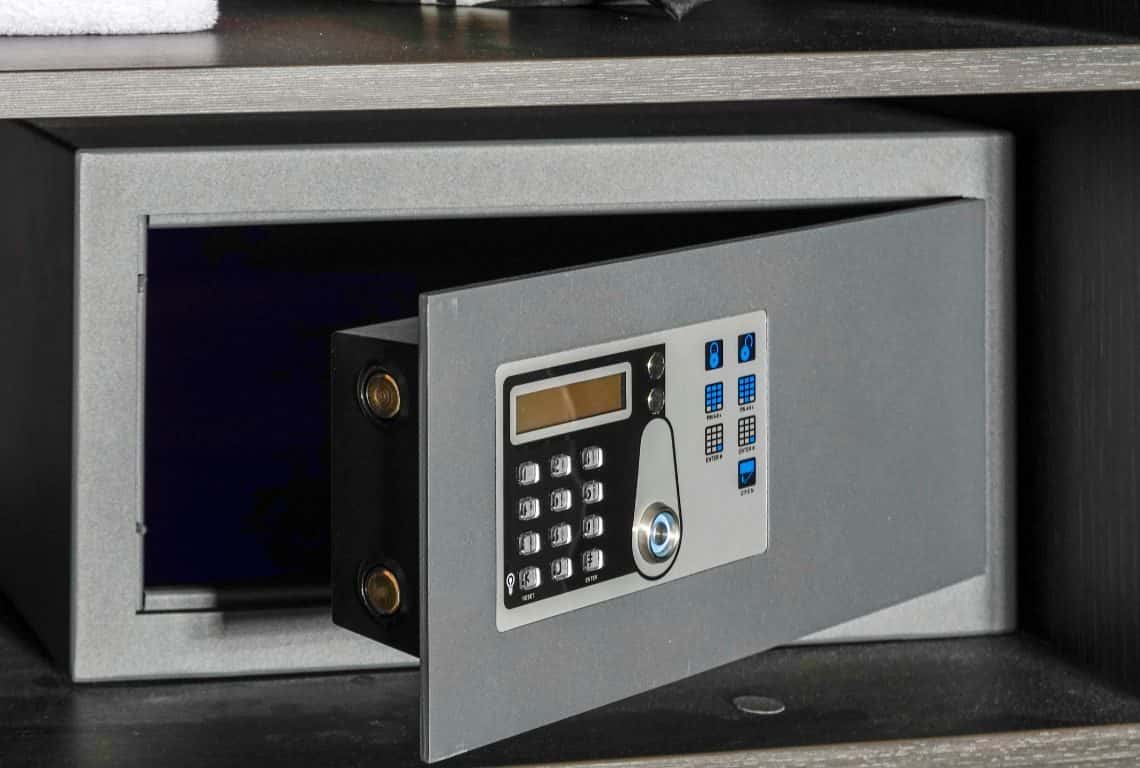
- Be Cautious at ATMs: When using ATMs, be aware of your surroundings and choose well-lit, secure locations. Shield the keypad with your hand when entering your PIN, and ensure you take your card and receipt with you. If you encounter any suspicious devices or behavior around an ATM, find another machine and report it to the authorities if necessary.
- Keep Emergency Contact Information: Have a copy of important contact information, such as your bank’s customer service number and the local embassy or consulate, in case you need to report lost or stolen cards or encounter other financial emergencies.
- Notify Your Bank: Inform your bank about your travel plans and provide them with your contact information. This step helps prevent any unexpected issues with your cards and allows them to notify you in case of suspicious activity.
By following these safety and security tips, you can minimize the risk of financial mishaps and enjoy your trip to Japan with peace of mind.
In the next section, we will provide you with some useful Japanese phrases related to currency and money exchange that can assist you during your interactions.
Useful Japanese Phrases for Currency and Money Exchange
Knowing a few basic Japanese phrases related to currency and money exchange can greatly facilitate your transactions and communication with locals. Here are some useful phrases to keep in mind:
Currency Exchange:
- “Kawase o shimasu”: I would like to exchange currency.
- “Yen o kawase shimasu”: I would like to exchange yen.
- “Doko de kawase ga dekimasu ka?”: Where can I exchange currency?
Making Payments:
- “Kore o kudasai”: Please give me this.
- “Otsuri wa arimasu ka?”: Do you have change?
- “Kurejittokado wa tsukaemasu ka?”: Do you accept credit cards?
- “Arigatou gozaimasu”: Thank you very much.
Asking for Prices:
- “Kore wa ikura desu ka?”: How much is this?
- “Takai desu ne”: That’s expensive.
- “Yasui desu ne”: That’s cheap.
Expressing Gratitude:
- “Sumimasen”: Excuse me or I’m sorry.
- “Onegai shimasu”: Please.
Remember, even attempting a few basic phrases in Japanese shows respect and effort, and locals will appreciate your attempt to communicate. Do not hesitate to use simple gestures, such as pointing to the price or showing the amount of money, to aid in your communication.
With these useful phrases in your repertoire, you’ll be better equipped to navigate currency-related interactions and communicate effectively during your trip to Japan.
Intrepid Scout's Tips for Guide to Japanese Currency for Tourists
There are additional resources and services that can assist you during your trip. Here are a few recommendations:
- Tourist Information Centers: Japan has numerous tourist information centers located in major cities and tourist destinations. These centers offer helpful guides, maps, and brochures, as well as multilingual staff who can provide personalized assistance regarding currency exchange, payment methods, and other travel-related queries.
- Travel Apps and Websites: Utilize travel apps and websites that offer currency conversion tools, real-time exchange rates, and information on nearby ATMs, currency exchange offices, and local discounts. Some popular apps include XE Currency, Trail Wallet, and Google Maps, which can help you locate nearby banks and ATMs.
- Local Banks and ATMs: If you encounter any difficulties with currency exchange or have specific questions related to your bank or card usage, visit a local bank branch or speak to their customer service representatives. They can provide you with up-to-date information and assistance tailored to your specific needs.
- Embassy or Consulate: In case of any major financial emergencies, such as lost or stolen passports, credit cards, or significant currency-related issues, contact your country’s embassy or consulate in Japan. They can provide guidance, support, and assistance in resolving such matters.
Remember to plan ahead, stay informed, and be proactive in seeking assistance when needed.
We hope this guide has equipped you with the necessary knowledge to navigate the world of Japanese currency and money management. Enjoy your trip, embrace the unique cultural experiences, and create unforgettable memories in the Land of the Rising Sun!
More Information About Japan:
14 Amazing Things to Do in Arashiyama (Map+Useful Tips)
What to See at Nijo Castle in Kyoto (10 Top Things to Know)
Stunning Golden Pavilion in Kyoto (How to Visit and What to See)
Amazing Fushimi Inari Taisha in Kyoto (8 Things to Know Before You Visit)
First Visit to Kyoto – How to Visit and What to See (11 Things You Can’t Miss)
Perfect Day Trip to Miyajima from Kyoto, Osaka, or Hiroshima
10 Amazing Things to Do in Hiroshima You Can’t Miss of Your Visit
Read All the Posts About Japan in:
Now, It Is Your Turn, I Would Like to Hear Back from You!
Are you planning your trip to Japan?
Please let me know! Drop me a quick comment right below!
Click on any of the images below to get inspired and to help you with the planning process for your trip to Japan!
- alert('URL copied to clipboard.')).catch(err => console.error('Unable to copy to clipboard.', err))">
Share via Email

2 Days in Dublin (15 Top Things You Can't Miss)


14 Tips for First Visit to Dublin to Help You Explore Ireland's Capital

Perfect 1-Day Ring of Kerry Drive Itinerary

22 Best Stops on the Ring of Kerry (Map+Top Attractions at Each Stop)

One Day in Zion National Park (4 Things You Can't Miss)
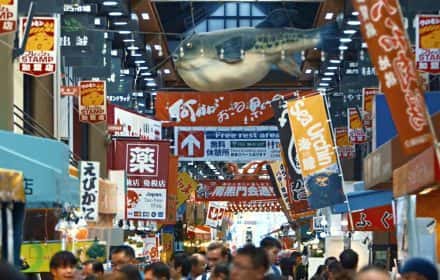
What to Eat at Osaka Kuromon Market (10 Culinary Experiences You Can't Miss)
@intrepid.scout
Leave an answer Cancel reply
Your email address will not be published. Required fields are marked *
The company processes your data to facilitate the publication and management of comments. You can exercise your rights of access, rectification, deletion and objection, among others, according to our Privacy policy .
- Money Transfer
- Rate Alerts
- Currency Encyclopedia
JPY - Japanese Yen
The Japanese Yen is the currency of Japan. Our currency rankings show that the most popular Japanese Yen exchange rate is the JPY to USD rate. The currency code for Yen is JPY , and the currency symbol is ¥. Below, you'll find Japanese Yen rates and a currency converter.
Select a currency
Importance of the Japanese Yen The Japanese Yen is the third most traded currency in the world, and the most heavily traded currency in Asia. Due to its relatively low interest rates, the Japanese Yen is often used in carry trades with the Australian Dollar and the US Dollar . A carry trade is a strategy in which a currency with low interest rate is sold in order to buy a currency with a higher interest rate.
Early Japanese Currency The history of currency in Japan began in the 8th Century when silver and copper coins, called the Wado Kaichin, began to be minted in 708. These coins imitated Chinese coins, and when Japan was no longer able produce their own coins, Chinese currency was imported into the country. Over the next few centuries, the inflow of Chinese coins did not meet the demand, so to counter this issue, two privately minted Japanese coins, the Toraisen and Shichusen, entered circulation from the 14th to 16th century. Around the 15th century, the minting of gold and silver coins known as Koshu Kin was encouraged and gold coinage was soon made into the new standard currency. The government later established a unified monetary system that consisted of gold currency, as well as silver and copper coins.
The Modern Day Japanese Yen By the 19th century, Spanish Dollars were being used in Japan, along with local currencies. In order to simplify and centralize the different coins being used at the time, the Yen (which means 'circle' or 'round object') was created in 1871. The New Currency Act developed a monetary system similar to the European one, with a decimal account system. The Yen operated under a bimetallic standard of gold and silver until 1897, when it was left under a sole gold standard. After World War II, the Yen lost much of its value and in 1971, fixed the exchange rate to the US Dollar at a rate of 308 JPY to 1 USD. This lasted until 1973 when it switched to a floating exchange rate.
Japanese Yen Stats
Japanese yen profile, why are you interested in jpy.
I want to...
Live Currency Rates
Central bank rates.

Guide to Japanese Yen: What Is It, How to Pay, and Where to Exchange in Japan?
When traveling to a foreign country, you may be faced with several challenges. Among these, you’ll be tasked to deal with the national currency before starting your trip. Not in all countries, such as in Europe, do the different countries use the same currency, the Euro. In Japan, you pay with the Japanese Yen . We’ll take a closer look at the currency today.
Japanese Currency: The Yen
In Japan, Yen has been used as the national currency since 1871 , which the Meiji government introduced based on the western model. The Japanese character for this is 円 (えん, pronounced “en” ), but ¥ is used internationally as a symbol.
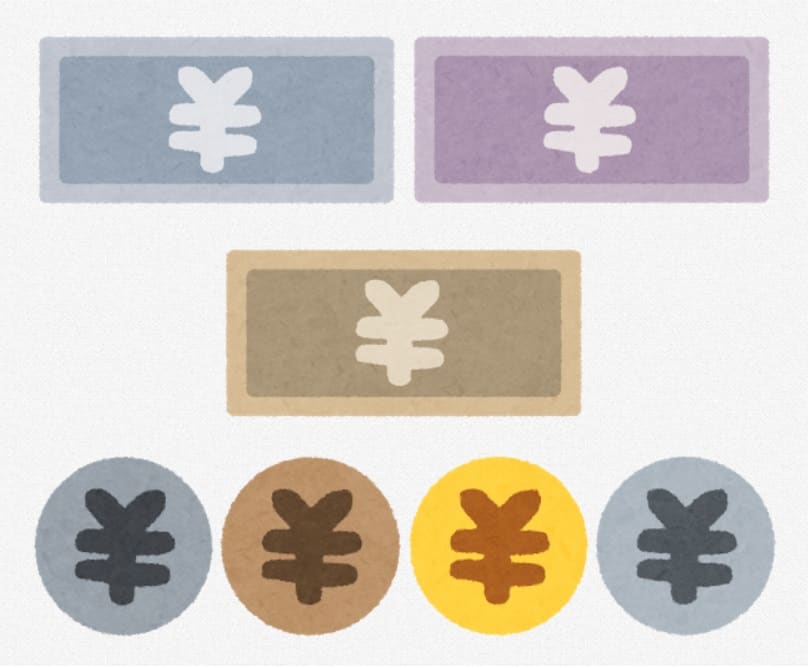
The Yen exchange rate compared to the Euro and the (US) Dollar changes daily depending on the global financial market, but in recent years, it has mostly been around 125 – 130 Yen for 1 Euro and 100 – 105 Yen for 1 (US) Dollar.
What Are the Coins and Bills Used in Japan?
As in many other countries, coins and notes are used to pay in Japan. These have different colors, symbols, and embossing. There are six different coins and four different notes in use in Japan.
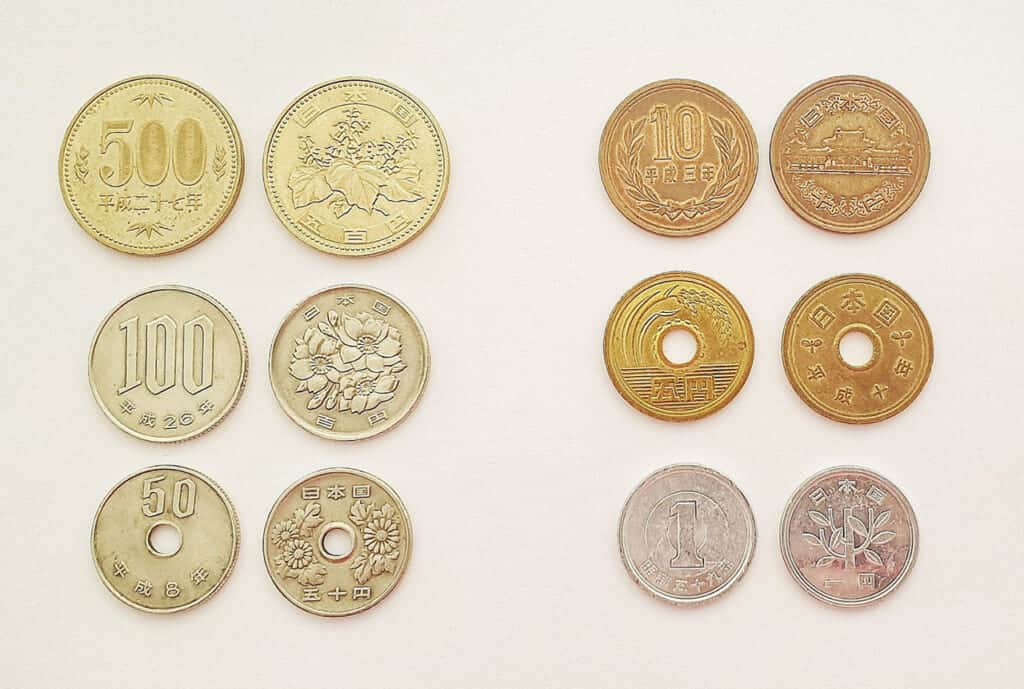
- The smallest coin is the 1 Yen coin . It is roughly comparable to 1 cent. This is made of aluminum and shows a young tree on the back and the Japanese characters for the country Japan, 日本国 (nihon koku).
- The 5 Yen coin has a hole in the middle and shows a sheaf of rice in the water. The value of the coin is shown with the kanji for 5 yen (五 円 goen ).
- The 10 Yen coin , made mostly of copper, shows the Phoenix Hall of the Byodoin temple in Uji city, Kyoto prefecture, on the reverse.
- The 50 Yen coin is slightly smaller than the 10 Yen coin and, like the 5 Yen coin, has a hole in the middle. On the back is a chrysanthemum, which is the national and imperial seal of Japan.
- The 100 Yen coin is comparable to the 1 Euro coin. The reverse shows cherry blossoms, which are symbolic of springtime in Japan.
- Finally, the 500 Yen coin is quite large compared to the other coins and is one of the two most valuable coins in circulation in the world. A paulownia (bluebell tree) is shown on the back.
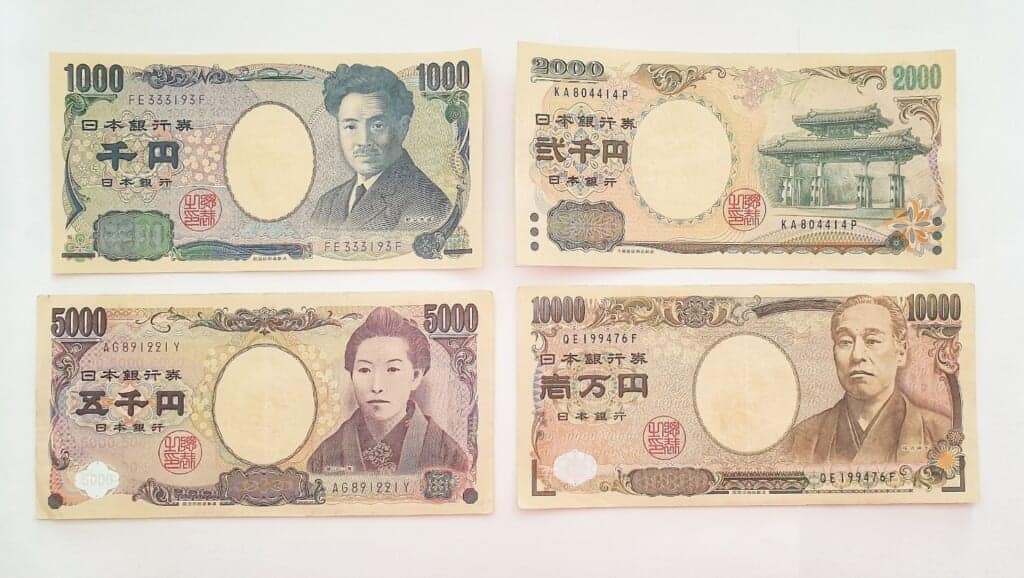
- The 1,000 Yen note is the smallest means of payment. It shows the physician and biologist Noguchi Hideyo on the front and Mount Fuji with cherry blossoms on the back.
- The 2,000 Yen note is quite rare in Japan and is mainly issued by foreign banks. On it, you can see the Shureimon Gate of Shuri Castle on Okinawa as well as an excerpt from Genji Monogatari (源氏物語, “The Story of Prince Genji ”).
- On the 5,000 Yen note, you will find the writer Higuchi Ichiyō and an illustration of Japanese irises by the artist Ogata Kōrin .
- The note with the greatest value is the 10,000 yen note . It shows the writer and philosopher Fukuzawa Yukichi on the front and the phoenix of the Byodoin Temple on the back.
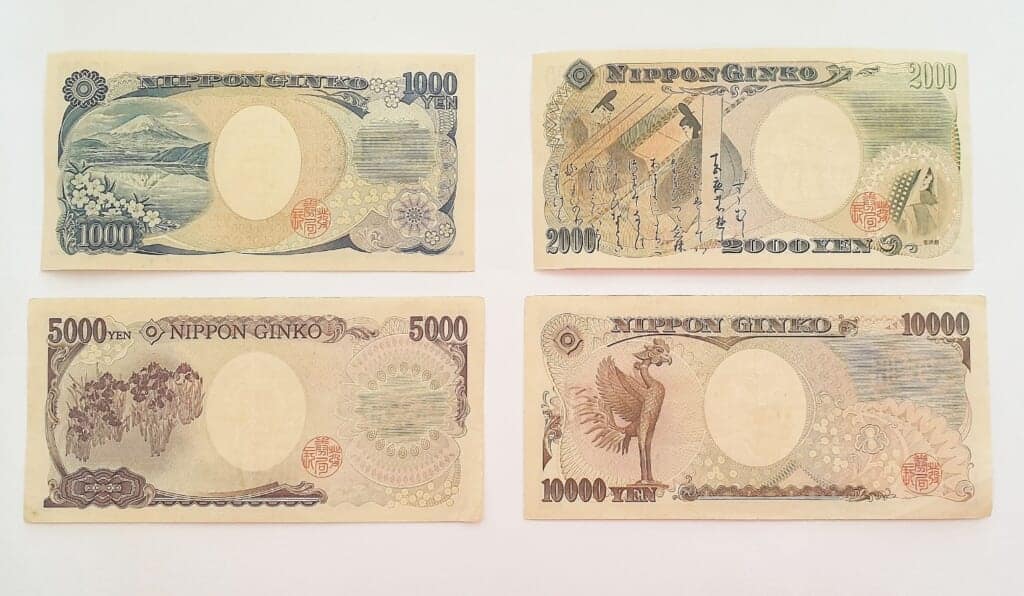
How to Exchange Foreign Currency and Withdraw Japanese Yen
If you travel to Japan, you’ll need to change your money, as you won’t be able to pay with the Euro or the Dollar in Japan. It is up to you whether you want to exchange your money at your local bank before you leave or after you arrive in Japan. However, it is advisable to always have some cash with you , as Japan has long been a cash-oriented society. There are exchange counters at international airports in Japan . You can change different currencies (you can also exchange the remaining Yen back to Euro or Dollar there before your return journey). But even in the larger metropolises’ inner cities, you can usually find exchange offices and machines at popular tourist locations.
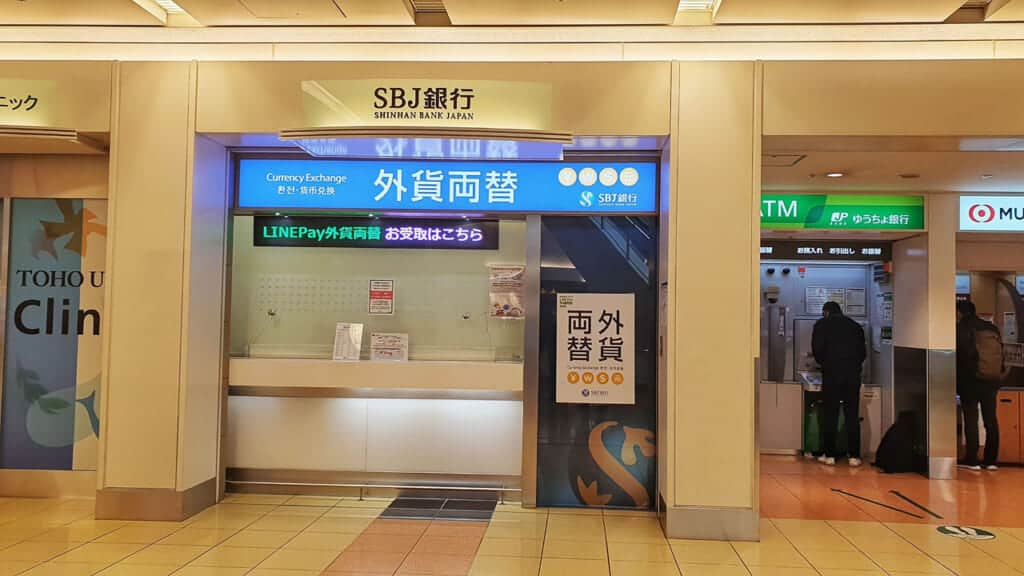
An alternative to changing your own currency into Japanese is to withdraw Yen directly from Japan’s cash dispenser — an ATM — using a debit or credit card . This does not work at all cash machines, but the Japan Post Bank machines and 7-Eleven, in particular, accept foreign cards and can withdraw cash for a fee. Note that some machines are not in operation around the clock. You should clarify with your bank in advance whether this is possible with your bank card or not.
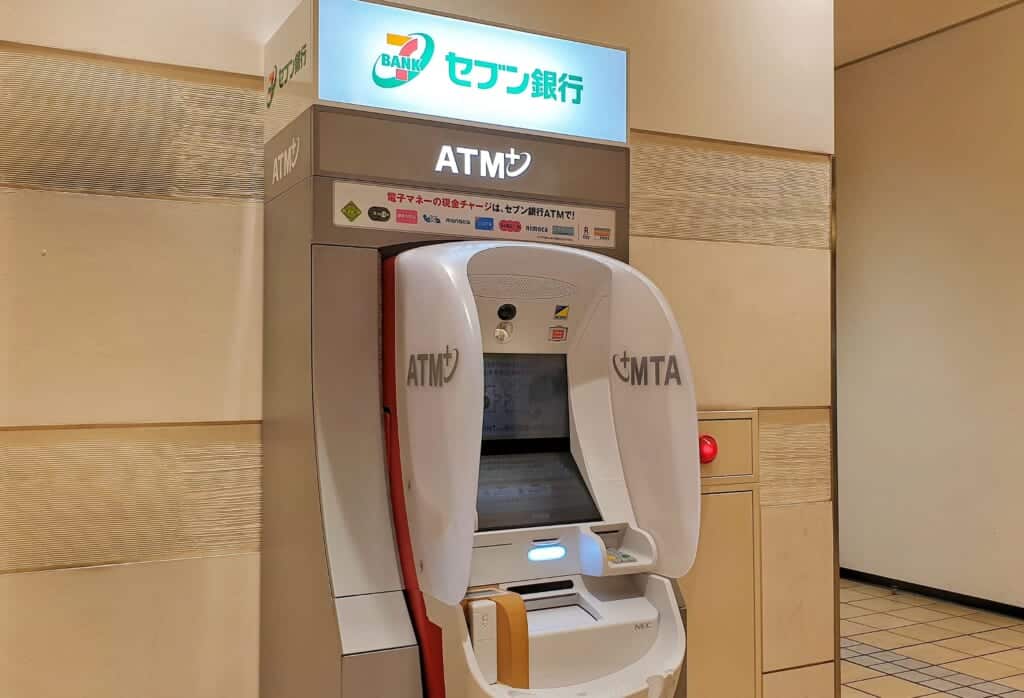
If you do not travel abroad often, it is advisable to let your bank know before you leave that you will be using your credit card in another country. Otherwise, the credit card provider might block the card due to suspicion of misuse.

The Mobal SIM Card is the only SIM card with a Japanese phone number — perfect if you need to stay in touch on short visits or for long-term visitors living, working, or studying in Japan. Mobal pocket wifi is also great if you’re traveling with family or a group!
The Change to Cashless Payment in Japan
Although Japan is known as the land of cash, recent years have been towards cashless payments. In many shops, supermarkets, and restaurants, you can now pay with the IC cards (Suica, Pasmo, etc.) that are normally used for trains. Payment apps such as PayPay , Line Pay ( Android / iOS ), and GooglePay ( Android / iOS ) are also becoming increasingly popular. The first shops now even only offer cashless payment.
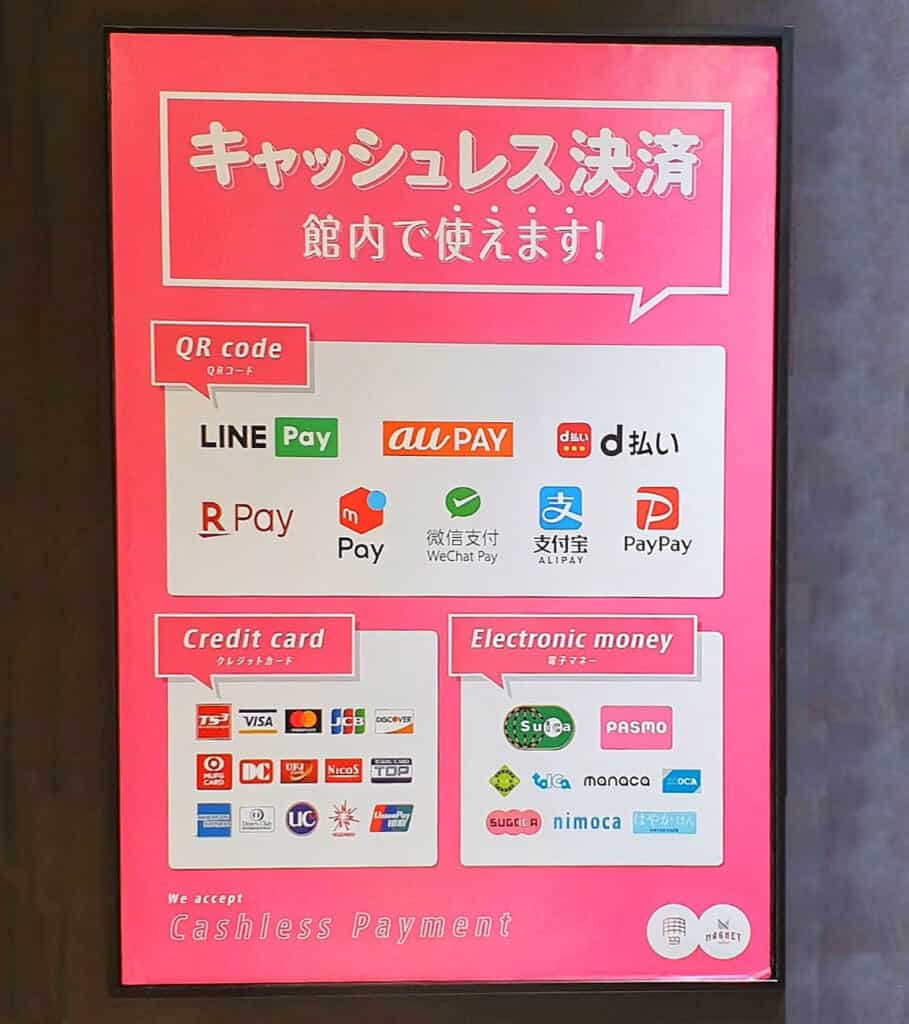
Before you travel to Japan, you should think about how you want to change your money into Japanese Yen, because cash is required on-site in most cases. Then nothing stands in the way of your next Japan adventure!

Claudia Mitsubori
Grown up in the middle of Germany, I made several trips to Japan since 2010, did one year Working Holiday and started living in Western Tokyo since October 2016 with my Japanese husband and our cute cat. I love traveling, food (especially sweets), learning more about Japanese traditions, Japanese music and everything related to cats. I am looking forward to share my experiences with you!
Most Popular Articles

Sakura in Osaka: Where are the Best Places to Enjoy Cherry Blossoms in 2024?

Japan’s “New Golden Route” Transforms to “Rainbow Route” with a New Addition in Spring 2024
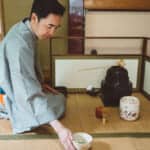
Leave a Reply Cancel Reply
Save my name, email, and website in this browser for the next time I comment.
I have read and accepted the Privacy Policy *

About Voyapon
- Privacy Policy
Affiliate Links
Some of our articles contain affiliate links. Whenever you use these links to buy something, we earn a commission to help support our work at Voyapon. Please read our disclosure for more info .
- Sightseeing
- Accommodation
- Things to Know
Destinations
Japan travel guide.
- Transportation
- Money in Japan
- Connectivity
- Getting Help
© 2024 VOYAPON. The images and contents of this site may not be used, reprinted or reproduced without permission.
- Media & Industry
- Meetings & Events
- Select Language 简体中文 繁體中文(香港) 繁體中文(臺灣) India (English) Bahasa Indonesia 한국어 ภาษาไทย Tiếng Việt Singapore (English) Philippines (English) Malaysia (English) Australia/New Zealand (English) Français Deutsch Italiano Español United Kingdom (English) Nordic countries(English) Canada (English) Canada (Français) United States (English) Mexico (español) Português العربية Japan(日本語) Global (English)
- India (English)
- Bahasa Indonesia
- Singapore (English)
- Philippines (English)
- Malaysia (English)
- Australia/New Zealand (English)
- United Kingdom (English)
- Nordic countries(English)
- Canada (English)
- Canada (Français)
- United States (English)
- Mexico (español)
- Global (English)
- Fujiyoshida
- Shimonoseki
- Ishigaki Island
- Miyako Island
- Kerama Island
- Tokyo Island
- Koka & Shigaraki
- Hida Takayama
- Ginza, Nihonbashi
- Beppu & Yufuin (Onsen)
- Ginzan Onsen
- Nagasaki Islands

- Kumano Kodo
- Shikoku Karst
- Amami Oshima
- Hachimantai
- Omihachiman
- Aizuwakamatsu

- Diving in Japan
- Skiing in Japan
- Seasonal Flowers in Japan
- Sustainable Outdoors
- Off the Beaten Track in Japan
- Scenic Spots
- World Heritage
- Home Stays & Farm Stays

- Japanese Gardens
- Japanese Crafts
- Temple Stays
- Heritage Stays
- Festivals and Events
- Theater in Japan
- Japanese Tea Ceremony
- Cultural Experiences in Japan
- Culture in Japan

- Local Cuisine Eastern Japan
- Local Cuisine Western Japan
- Local Street Food
- Japan's Local Ekiben
- Japanese Whisky
- Vegetarian and Vegan Guide
- Sushi in Japan Guide
- Japanese Sake Breweries

- Art Museums
- Architecture
- Performing Arts
- Art Festivals
- Japanese Anime and Comics
- Japanese Ceramics
- Local Crafts

- Scenic Night Views
- Natural Wonders
- Theme Parks
- Samurai & Ninja
- Iconic Architecture

- Wellness Travel in Japan
- Japanese Ryokan Guide
- A Guide to Stargazing in Japan
- Relaxation in Japan
- Forest Bathing (Shinrin-yoku)

Experiences in Japan
- Enjoy my Japan
- National Parks
Japan's Local Treasures
- Japan Heritage
- Snow Like No Other
- Wonder Around Japan

Visa Information
- Getting to Japan
Airport Access
- COVID-19: Practical Information for Traveling to Japan
- Anime Tourism
- Countryside Stays
- Accessible Tourism
- Hokkaido Great Outdoors
- Scenic World Heritage in Tohoku
- Shikoku’s Nature and Traditions
- Southern Kyushu by Rail

- Traveling by Rail
- How to Travel by Train and Bus
- JR Rail Passes
- Scenic Railways
- Renting a Car
- Sustainable Travel in Japan
- Travel Brochures
- Useful Apps
- Online Reservation Sites
- Eco-friendly Accommodation
- Luxury Accommodations
- Traveling With a Disability
- Hands-free Travel
- How to Book a Certified Tour Guide
- Volunteer Guides
- Tourist Information Center

- Japanese Manners
- Spring in Japan
- Summer in Japan
- Autumn in Japan
- Winter in Japan
- Cherry Blossom Forecast
- Autumn Leaves Forecast

- Japan Visitor Hotline
- Travel Insurance in Japan
- Japan Safe Travel Information
- Accessibility in Japan
- Vegetarian Guide
- Muslim Travelers
- Safety Tips

- JAPAN Monthly Web Magazine
- Arts & Cultures
- Nature & Outdoor
- Festivals & Events
- Insider Blog
- Things to do
- Local Guides
- Food & drink
- Traditional
- Hokuriku Shinetsu

My Favorites
${v.desc | trunc(25)}
Planning a Trip to Japan?
Share your travel photos with us by hashtagging your images with #visitjapanjp
Travel Japan - The Official Japan Guide
Spring in Japan: Cherry Blossom Forecast 2024
Where & when to enjoy sakura in Japan
Go Beyond Japan’s Major Cities: Hokuriku Shinkansen Extension in 2024
Sakura and Beyond: Famous Japanese Flowers to Check Out in 2024
Explore Royal Artwork at The Museum of the Imperial Collections, Sannomaru Shozokan
Guiding your trip to new adventures in Japan
WONDER AROUND JAPAN
Photo Credit : Guided Cycling Tour Biei
Live to Travel, Travel to Live
Discover how all of Japan is getting behind Expo 2025, coming to Osaka in Japan’s Kansai region
An epic eating adventure.
Memories in the Making
Welcome to the official tourism website of Japan
Unforgettable experiences and breathtaking moments, finding the hidden gems.
Stories & Guides
Explore Japan's vast cultural, eating, drinking, and shopping scenes
Things to Feel
Discover the full range of amazing things to feel across Japan
Tohoku Colors
Experience the seasonal and cultural beauty of northeastern Japan
Top recommendations.

All Eyes On
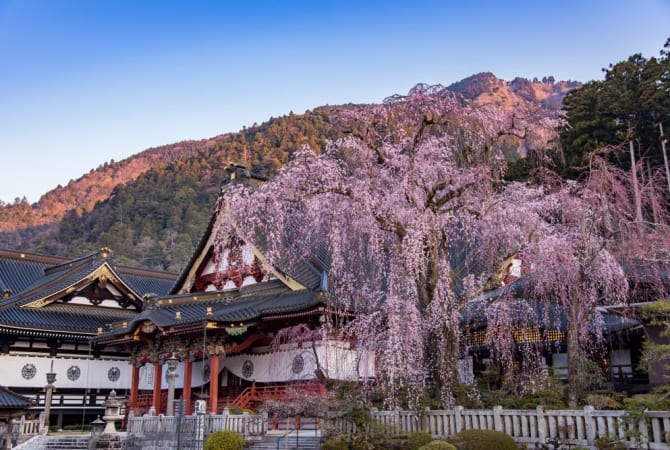
Travel Highlights
Popular places.
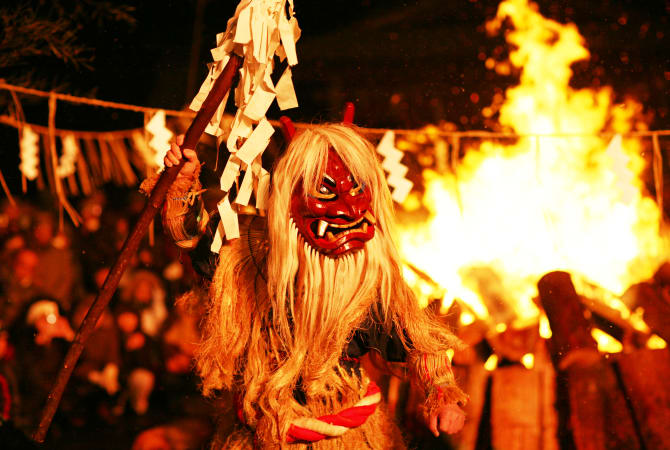
Explore by Interest

Important Notice
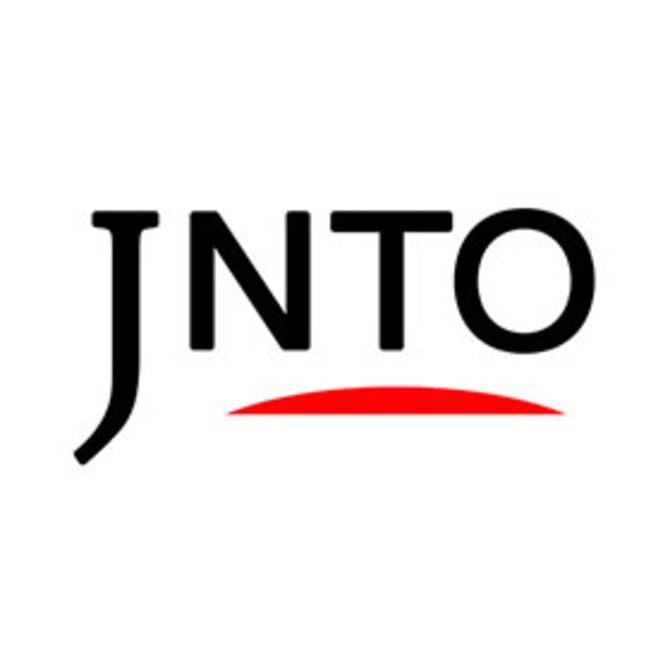
News from JNTO & Our Partners
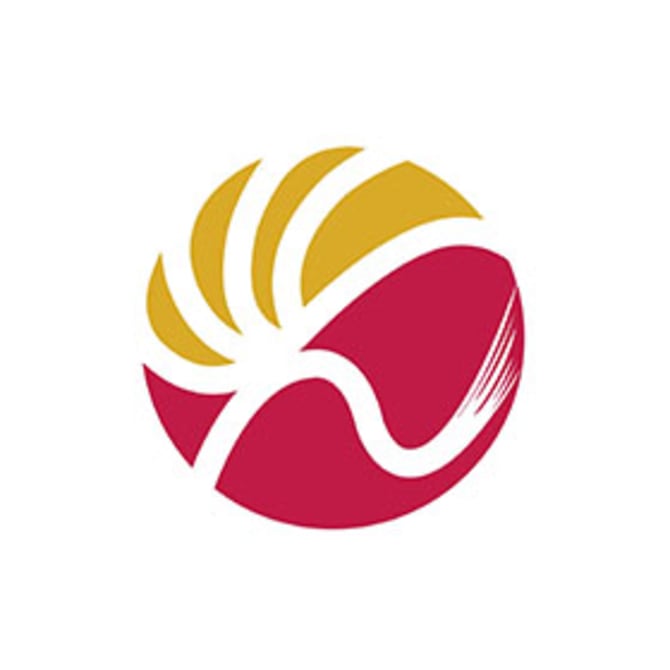
Inspiring Articles
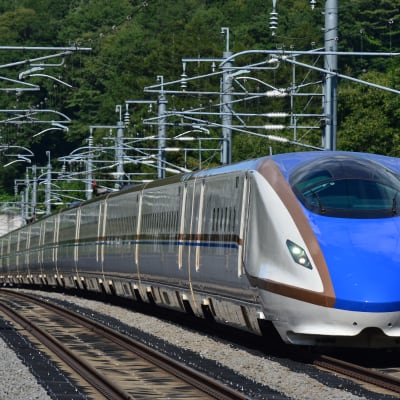
Food features
For First-Time Visitors
- Wi-Fi & Connectivity
- Weather & Geography
- IC Travel Cards
Where to Stay
- Luxury Stay
- Haneda Airport
- Narita Airport
- Osaka (KIX)
- Fukuoka Airport
Getting Around
- Shinkansen (Bullet Train)
- Luggage & Storage
Suggested Walks & Tours
- Tokyo 48 Hours
- Golden Route
- 2 Weeks in Japan
- Tour & Activities
Brochure Download
- Tours and Activities

Japanese Government Information
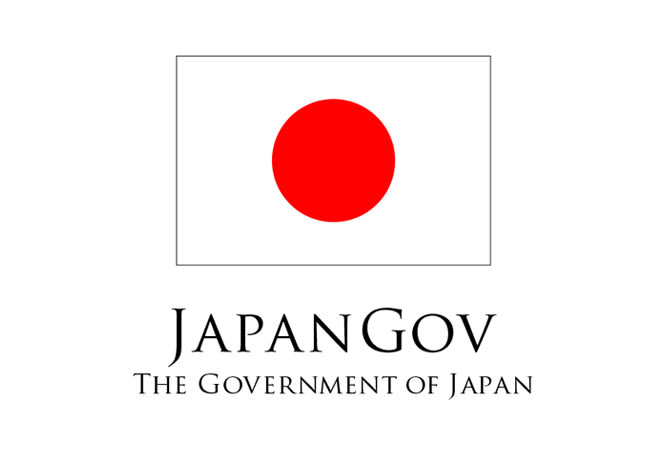
Please Choose Your Language
Browse the JNTO site in one of multiple languages

Cash In Japan: Everything You Need To Know
by Melissa Giroux | Last updated Dec 5, 2023 | Asia , Japan , Travel Tips
If you’re planning to travel to Japan, there’s one thing you should prepare for – money!
In this guide, we’ll explore all the topics related to money in Japan .
Ready To Travel? Don't Go Without Travel Insurance.
Check Prices
We’ll talk about the currency, withdrawals and ATMs, money transfers in Japan, and some travel tips related to money.
Without further ado, let’s have a look at the Japanese currency.
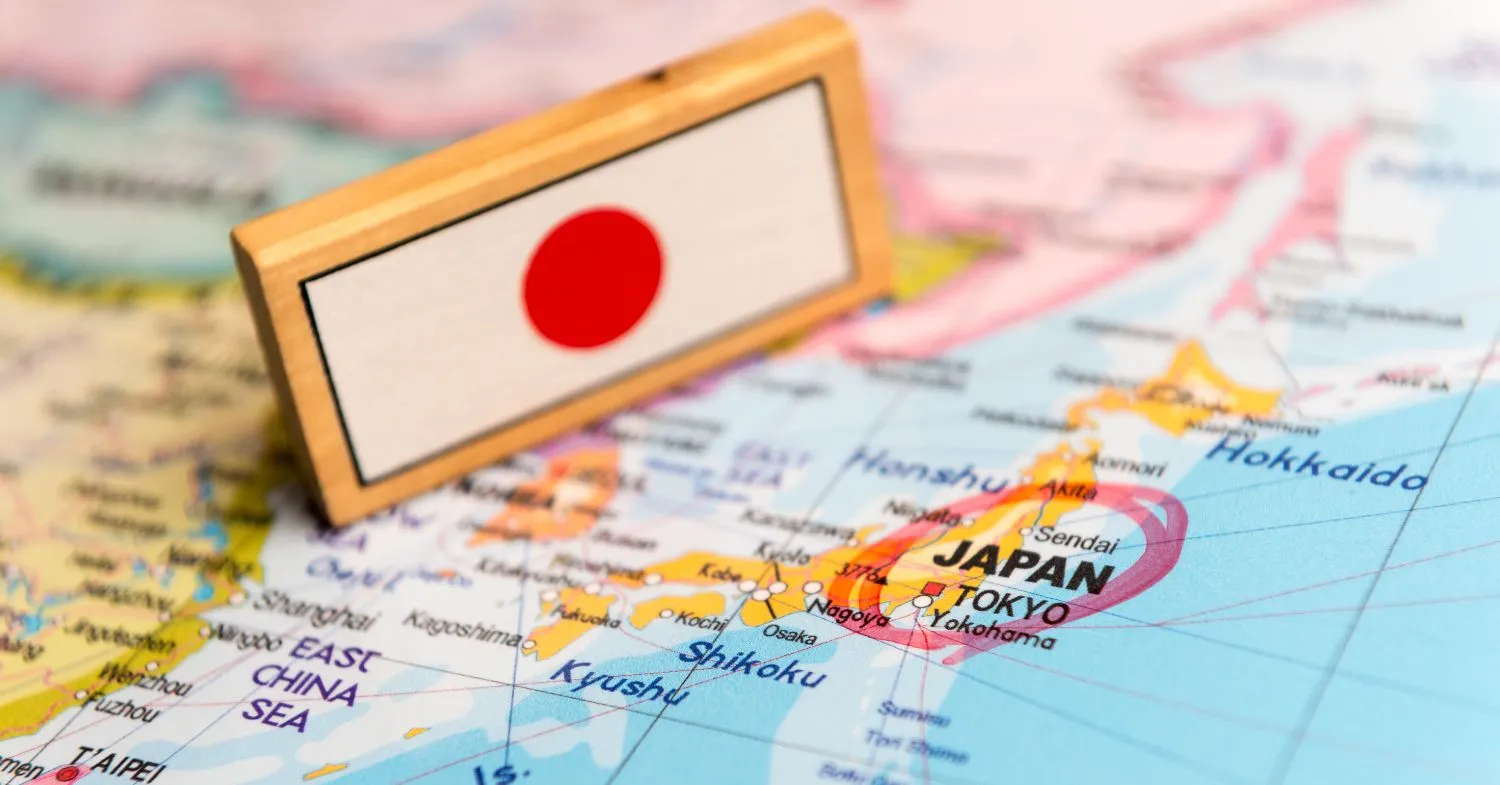
Japanese Yen
The official currency in Japan is the Japanese Yen (JPY).
You’ll find banknotes and coins.
- 1000 (blue)
- 2000 (green)
- 5000 (purple)
- 10000 (brown)
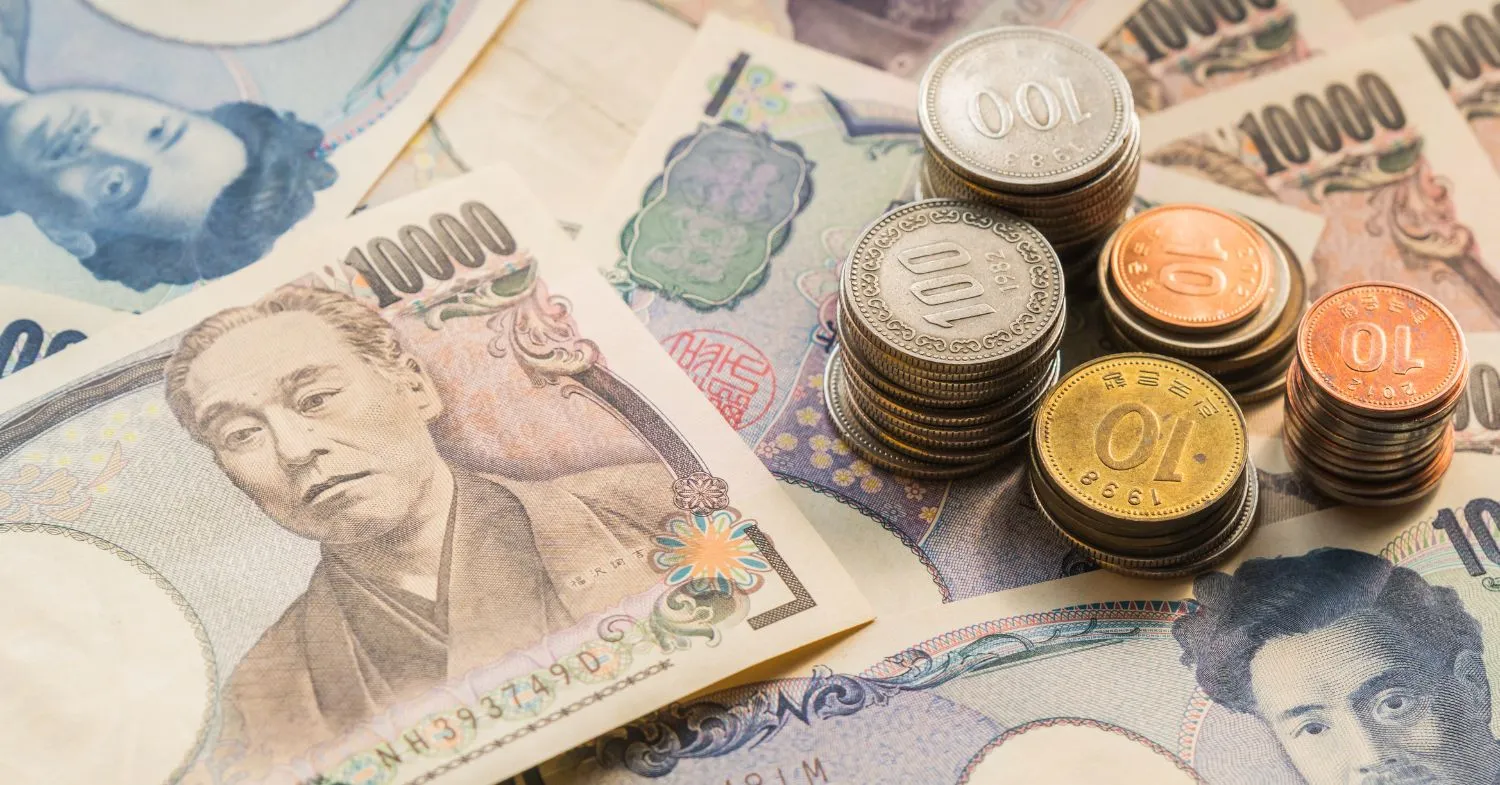
As the currency exchange can fluctuate quickly, we recommend you keep a look at the latest rates before your trip and during your trip.
Planning your upcoming adventures? Travel by bus! (It's cheap!)
I usually take a screenshot of the latest rates the day before the trip so that I can have a quick look to get familiar with the conversion when I buy something or withdraw money.
Best Way To Get Cash In Japan
The best way to get Japanese Yen is to withdraw money in an ATM or exchange money before your trip/on arrival).
I personally use bank ATMs to withdraw cash in Japan as I’m not a big fan of exchanging money abroad, but some people prefer this, so we’ll make sure to cover each topic in this guide.
Withdrawing Cash In Japan
You can easily find ATMs in Japan, especially in bigger cities and tourist hotspots. You’ll find them at banks, convenience stores (like Seven-Eleven or Lawson), and airports.
Most ATMs accept debit/credit cards from all over the world. You should be able to withdraw JPY with no problem. I personally use Revolut in Japan to withdraw money.
How To Withdraw Money In Japan
Follow the steps below to withdraw cash in Japan:
- Find an ATM
- Insert your card
- Select your language
- Click on the option to make a withdrawal
- If you’re given an option for the exchange rate, select the option “Without Conversion”, as you’ll get a better exchange rate this way
- Accept the transaction fees (if any)
- Take your money and card
I personally use my Revolut card to withdraw money in Japan. Revolut is a great option for travelers as you can freeze and unfreeze your card. There are other advantages for travelers too. Learn more by reading our Revolut review .

Exchanging Money In Japan
Another way to get money in Japan is by exchanging currencies. You can find exchange offices in airports, major cities, or banks.
While some people prefer the convenience of changing money before their trip, it’s better to exchange money in Japan. The exchange rates you find in Japan are usually better.
Now, you may be wondering which currency to take to Japan. Think of the main currencies such as USD and EUR. However, you’ll only be able to use Japanese Yen (JPY) in Japan.
Payments In Japan
Cash in Japan is handy, and you should always have some in your pocket. For example, cash is useful to buy a train ticket. That said, many places accept payments with debit/credit cards.
Let’s take a look at the primary payment methods in Japan.
In some cases, you’ll have to pay with cash.
So, make sure to always have some Japanese Yens with you.
If you’re out of cash, you should be able to find ATMs easily, so you can always go withdraw money if needed.
Debit/Credit Cards
Although there are still some places where you can’t pay with cards, you’ll find that some restaurants and stores accept it. For example, modern restaurants, supermarkets, and malls accept payments by card.
When I pay with a card, I usually use my Revolut card .
In some shops, you can use the contactless method, but in some places, you’ll need to enter your PIN code.
Tipping In Japan
Tipping is not expected in Japan. However, some high-end restaurants may charge for service on the bill, or have a tipping box.
Japan Travel Money Tips
The best way to get Japanese Yens is to use an ATM to get cash or exchange currencies in Japan.
The best way to travel with money in Japan is by using a travel card like Revolut . This way, you can pay by card when you can or withdraw money easily.
Having a Japan SIM card to access the Internet in Japan can be handy if you want to see the currency exchange rates or find an ATM nearby.
When withdrawing larger sums, we recommend the following:
- Put your money somewhere safe (wallet or money belt ).
- Once you arrive at your accommodation , find a safe spot for your money. You don’t need to carry all your money at all times (unless you want to). If you stay in a hostel , make sure to keep your money hidden and locked in a locker. If you stay in a hotel, you can also hide and lock your money or simply put the “don’t disturb sign” on the door. As a result, you’ll get no cleaning and no strangers in your room.
How Much Money To Bring To Japan
It all depends on your travel style and budget. I always get money on arrival, so I don’t really “bring money to Japan”.
Although, if you wish to have money on arrival, you can exchange money before your trip.
Here are some pointers to keep in mind to figure out the right amount of money to bring to Japan:
- How long is your trip?
- Is your accommodation paid for, or will you need to pay on arrival?
- Are your tours and activities paid for, or will you need to pay on arrival?
- How are you planning on getting around Japan?
- What’s your budget for Japan?
Once you know the answers to these questions, you should be able to have a rough idea of how much money is needed in Japan.
Alternatively, you can withdraw cash on arrival instead of bringing money with you. ATMs in Japan are available in airports, and convenience stores. So, you’ll be able to get cash easily.
Japan Money Transfers
The best way to transfer money to Japan is with Wise .
It could take a few days, so make sure to send money ahead of time if required.
That said, it’s worth comparing your options to find the best currency exchange rate and transfer fees.
Let’s see why you may need to transfer money to Japan:
- Paying rent to the landlord
- Buying a property in Japan
- Payment of utility bills
Final Thoughts On Money In Japan
And that’s all you need to know about money in Japan!
Having a travel card from Revolut is the best way to manage your money. It’s easy to top up, gives you an excellent exchange rate, and you can use it to pay for things in Japan.
As you can see, having cash is still a must in Japan. Just make sure to be smart about it and pay attention to where you put your money.
Traveling soon? Read one of the following guides:
- Japan rail pass
- Is Hiroshima worth visiting
- Is Hakone worth visiting

MY TOP RECOMMENDATIONS
BOOK HOTEL ON BOOKING.COM
BOOK HOSTEL ON HOSTELWORLD
GET YOUR TRAVEL INSURANCE
LEARN HOW TO START A TRAVEL BLOG
LEARN HOW TO VOLUNTEER ABROAD

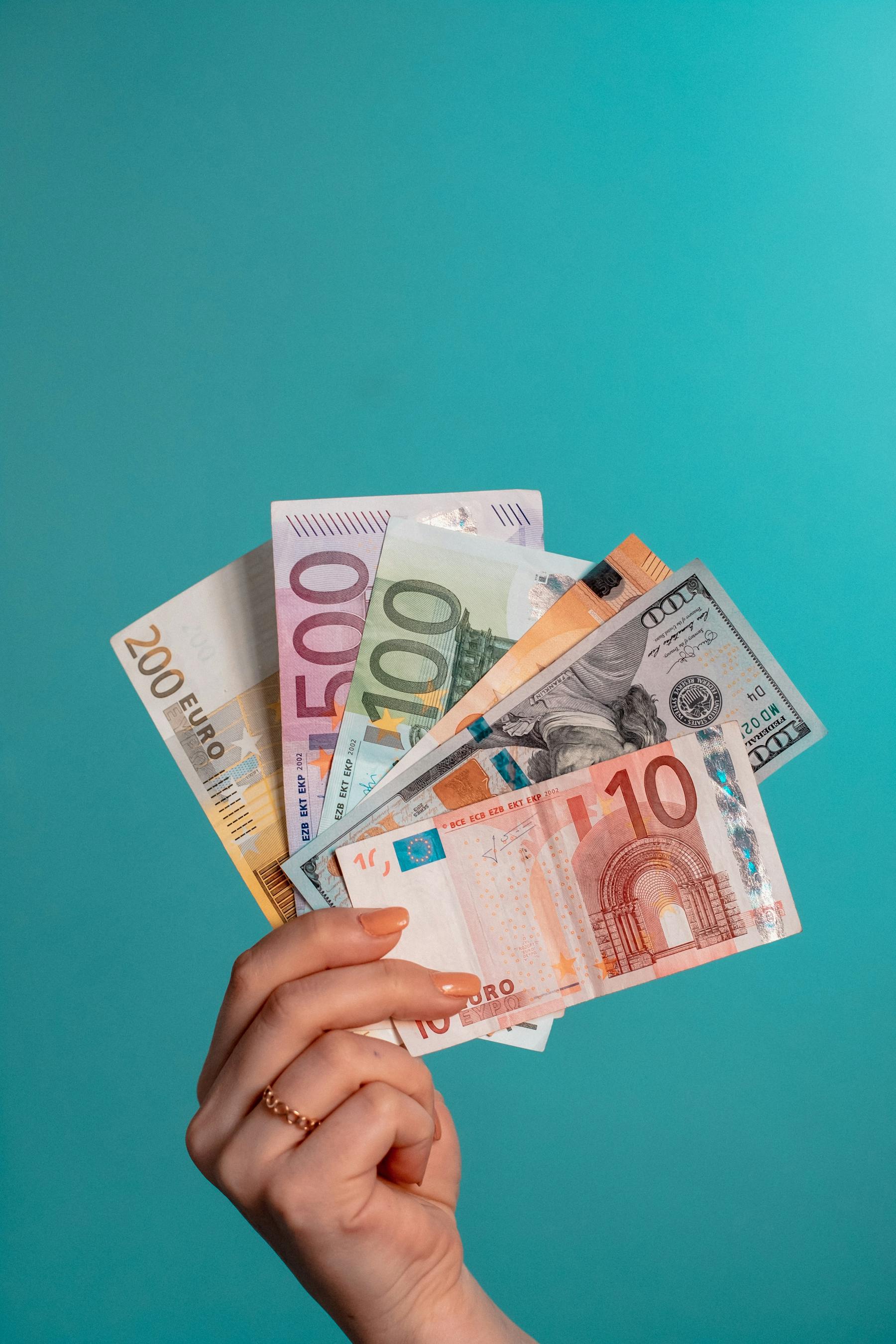
How to Get Japanese Yen in the USA Without Huge Fees

Jarrod Suda
A writer and editor at Monito, Jarrod is passionate about helping people apply today’s powerful finance technologies to their lives. He brings his background in international affairs and his experiences living in Japan to provide readers with comprehensive information that also acknowledges the local context.
Links on this page, including products and brands featured on ‘Sponsored’ content, may earn us an affiliate commission. This does not affect the opinions and recommendations of our editors.
Preparing for your travels to Japan? You may be wondering whether you should prepare some Japanese Yen in cash prior to your departure, or if its cheaper to simple use your cards in Japan after arrival.
In this guide, we will explore the best overall place to get Japanese Yen online in the USA, which is with a travel money card like Revolut or Wise . If you'd like to simply withdraw Japanese Yen in cash from an ATM in Japan, we will explain how to do so without incurring unnecessary fees.
We'll cover the costs, and the pros and cons, involved for each method. By understanding your options and their fees up front, you can enjoy the peace of mind that you're getting the best deal for your situation.
We highly recommend Revolut 's travel debit card to buy Japanese Yen in the USA cheaply. Revolut is a multi-currency account that allows you to hold and exchange US Dollars, Japanese Yen, and over 30 other foreign currencies at industry-low, transparent fees and exchange rates. Best of all, you can easily do this online or straight from the app!
The Best Places to Buy Japanese Yen in the USA
- 01. Japanese Yen travel money card scroll down
- 02. ATMs abroad via travel debit card scroll down
- 03. Online foreign currency exchange scroll down
- 04. Traditional banks scroll down
- 05. Money changer kiosks scroll down
- 06. Airport kiosks scroll down
- 07. Summary: Where to buy Japanese Yen in the USA scroll down
1. Japanese Yen Travel Money Card
Travel money cards are prepaid debit cards that let you hold the local currency of your destination (JPY) so that ATMs and point-of-sale devices treat you like a local card holder. Simply top up your card balance in US Dollars and convert those balances to Japanese Yen. Then use your card to pay with peace of mind like a local.
User-friendly fintech apps like Revolut and Wise far and away offer superior rates when compared to banks and bureau de change kiosks. Since you can download the apps and use their virtual cards directly onto your smartphone, we also consider them to be more convenient. Compare the in more detail with our in-depth prepaid travel card guide .
Revolut Account
Revolut charges no foreign transaction fees on the first $1,000 spent per month and no ATM fees on the first $1,000 per month, although fair use limits and weekend surcharges may apply. This ATM policy is far more generous than other competitors such as Wise , Monzo , and Monese . If you're in a rush, you'll still be able to access Revolut's instant virtual card from the app and add it Apple Pay, Google Pay, and other third-party digital wallets.

- Trust & Credibility 8.9
- Service & Quality 7.9
- Fees & Exchange Rates 8.3
- Customer Satisfaction 9.4
Wise Multi-Currency Account
Unlike banks, credit unions, airport kiosks, and foreign ATMs , Wise is transparent about never charging a hidden exchange rate margin when you convert your dollars into euros (and 51 other currencies) with them. The live rate you see on Google or XE.com is the one you get with Wise . Instead, they charge an industry-low commission fee, which ranges from 0.35% to 2.85%.

- Trust & Credibility 9.3
- Service & Quality 8.9
- Fees & Exchange Rates 7.6
- Customer Satisfaction 9.6
2. ATMs Abroad Using a Debit Card With No Foreign Transaction Fees
We recommend getting Japanese Yen in cash from ATMs with debit cards because credit cards with charge you cash advance fees and high APR on ATM withdrawals. Plus, debit cards will use exchange rates set by your card network (like Visa and Mastercard ), which are near the mid-market rate.
Foreign transaction fees are fixed percentage fees (usually around 2.5%) that card issuers will tack on to the purchase price. These fees pile up when you travel and spend internationally, which is why you should always travel with a card that waives foreign transaction fees .
Travel Tip: Read more about the 5 best debit cards that waives international transaction fees .
Always Pay in the Local Currency
- When the point-of-sale machine or ATM in Japan ask you to "Pay in JPY" or "Pay in USD", always opt to pay in the local currency: Pay in JPY.
Learn more about dynamic currency conversions .
3. Online Foreign Currency Exchange
Online foreign currency exchange services are convenient and can be reasonably priced if you order a few weeks in advance. Take note to not pay with a credit card because your card provider will treat it like a cash advance, which will incur fixed fees and APR costs. When you order Japanese Yen in cash online, foreign exchange service providers will charge you two kinds of fees:
- Exchange Rate Margin: Providers apply an exchange rate that is poorer than the true "mid-market" exchange rate . They keep the difference, called an exchange rate margin .
- Commission Fee: This fee is usually a percentage of the amount converted, which is charged for the service provided.
In-Person Cash Pick-Up
Most services allow you to visit a local branch in your neighborhood to pick up your cash. This is usually a no-cost service.
Home Delivery
For added convenience, you can pay a delivery fee to have the money sent to your designated address on a set date and time.
4. Traditional Banks
Despite commonly heard advice, banks and credit unions are outdated currency exchange providers. Many banks offer foreign exchange services online, but you may need to be a client of the bank. You can pay by cash, card, or with your existing account balances.
For illustration, we found that Bank of America was converting €1,000 EUR into $1010.60 USD even though the mid-market exchange rate was at €1,000 EUR = $1,063.60 USD*. That's a markup worth $53.
*Exchange rates recorded on 22 September 2023 12:55 CEST.
We generally recommend against getting Japanese Yen from your traditional bank or credit union.
5. Money Changer Kiosks
Money changers generally charge high exchange rate margins, like banks and online foreign exchange services. We tend to treat these providers in the same category as airport bureau de change. Even if they advertise "no commission," you will still incur the hidden cost of the exchange rate margin.
While these kiosks may be conveniently located in cities and tourist attractions, we recommend going to bank ATM instead, using a prepaid travel card or a debit card that waives foreign transaction fees .
6. Airport Bureau de Change Kiosks
While bureaux de change at airports in the USA may be convenient for last-second exchanges, they charge huge exchange rate margins and hefty commission fees. They should be avoided at all costs.
If you need cash for your trip to Japan, we recommend that you withdraw cash from an ATM abroad, using a prepaid travel card or a debit card that waives foreign transaction fees .
Summary: How to Get Japanese Yen in the USA
Each method to get Japanese Yen in the USA will have its conveniences and drawbacks depending on your situation.
Here is a summary of the best places to buy JPY with USD:
- Prepaid Travel Money Card: Compare the best travel money cards .
- ATM with Debit Card: The top 5 that waive foreign transaction fees .
- Online Foreign Currency Exchange Service: Learn about travel money .
- Traditional Banks: Explore bank currency exchange .
- Money Changer Kiosks: Find the best way to spend money abroad .
- Airport Bureau de Change: Use ATMs abroad as better alternatives .
Frequently Asked Questions About How to Get Japanese Yen in the USA
We generally only recommend getting Japanese Yen in the USA if you open a free multi-currency account from Revolut or Wise . If you want Japanese Yen while in Japan, then it is best to simply get cash from an ATM there.
You can use any of the 6 methods included in this article. We recommend travel money card, which let you hold JPY via a multi-currency account and spend them with a card.
Yes, you can exchange for Japanese Yen at a bank in the USA. However, it is generally expensive because they may charge commission fees and very high exchange rate margins.
- Open an account with Revolut or Wise ;
- Access your account online by desktop or by smartphone;
- Top up USD onto the multi-currency account;
- Convert the USD to JPY using their industry-low rates.
It depends on your method. If you want to get Japanese Yen in the USA, then we recommend you open an account with a multi-currency account like Revolut or Wise . If you want Japanese Yen while in Japan, then its best to get cash from an ATM.
Currency exchange rates are constantly in flux due to market fluctuations. This is why we recommend multi-currency account like Revolut or Wise . They have features that let you lock in a desired exchange rate, which will trigger a conversion if met by the mid-market rate.
Learn More About Where to Best Buy Foreign Currency in the USA

Why Trust Monito?
You’re probably all too familiar with the often outrageous cost of sending money abroad. After facing this frustration themselves back in 2013, co-founders François, Laurent, and Pascal launched a real-time comparison engine to compare the best money transfer services across the globe. Today, Monito’s award-winning comparisons, reviews, and guides are trusted by around 8 million people each year and our recommendations are backed by millions of pricing data points and dozens of expert tests — all allowing you to make the savviest decisions with confidence.
Monito is trusted by 15+ million users across the globe.
Monito's experts spend hours researching and testing services so that you don't have to.
Our recommendations are always unbiased and independent.
Travel Budget
This page is meant to give you a rough idea of the cost of individual travel in Japan by introducing some sample budgets. Note that accommodation rates can increase during peak seasons in popular destinations which is not reflected by the numbers below. View also our pages about budget travel , package tours and suggested itineraries to see the sample budgets applied to specific itineraries.
Sample daily budgets
The numbers below do not include the cost for transportation and heightened accommodation rates during peak seasons. Click here for the current yen exchange rates.
Accommodation
Below are typical rates for accommodation outside the peak seasons . Rates can increase considerably during the peak seasons! Check our accommodation page for more information on different accommodation types and corresponding price ranges.
Low budget: 3,000 - 5,000 yen per night and person Dormitories and hostels , found in most cities of Japan, typically charge below 5000 yen per night and person. Furthermore, booking services like Hostelworld offer great deals.
Medium budget: 6,000 - 12,000 yen per single room and night 8,000 - 15,000 yen per double room and night At this level, you will find rooms in business hotels , minshuku and inexpensive, no-frills ryokan . Some tour packages (for individual travelers) include accommodation at quality Western-style hotels at this price level.
High budget: over 12,000 yen per single room and night over 15,000 yen per double room and night Starting around 12,000 yen per person, you can get rooms in better business hotels and inexpensive Western-style hotels. A stay at a ryokan with two meals included typically costs between 15,000 and 30,000 yen per person and night. For a room in a 4 or 5 star Western-style hotel, you typically pay from 25,000 to 50,000 yen per room and night.
Low budget: 500 yen per day At this level, you will have to live from convenience store food (bread, rice balls, etc.) and fast food restaurants like McDonald's or Mister Donut which offer inexpensive breakfasts.
Medium budget: 500 - 1000 yen per day Many coffee shops and some restaurants in shopping areas and around train stations offer breakfast sets for around 500 to 1000 yen.
High budget: above 1000 yen per day Hotel breakfasts and breakfast buffets will usually cost you more than 1000 yen. Breakfast buffets in first-class hotels typically cost at least 3000 yen.
Low budget: 500 - 800 yen per day Inexpensive lunch boxes are available in convenience stores and stands in railway stations and business districts. Various fast food restaurants , specializing in noodles, curry, domburi or hamburger, also offer relatively filling meals for 800 yen or less.
Medium budget: 800 - 1500 yen per day At this level you will have an even larger range of inexpensive restaurants such as the above mentioned fast food places, plus restaurants which offer lunch set specials for around 1000 yen.
High budget: above 1500 yen per day A lunch at better restaurants costs typically between 1500 and 3000 yen.
Low budget: 500 - 1000 yen per day Convenience stores sell various, inexpensive ready-to-eat meals. Other options are again cheap fast food restaurants .
Medium budget: 1000 - 2500 yen per day Conventional restaurants are generally more expensive in the evening than during lunch time, as there are no lunch specials. At this level, you will be able to enjoy a nice dinner at a wide range of fast food and conventional restaurants, including the restaurants found in department stores where meals typically cost between 1000 and 2500 yen, not including alcoholic drinks.
High budget: above 2500 yen per day With 3000 yen per person you will be able to have a good dinner at a wide range of restaurants . Calculate 5000 yen upwards per person for a dinner at upper class restaurants specializing in sushi , French cuisine, sukiyaki, kaiseki ryori, steaks, etc.
Sightseeing
Low budget: 0 - 500 yen per day Japan offers many free attractions. Most shrines and some temples do not charge admission fees. A few museums charge no admission on one day of the week or month.
Medium budget: 500 - 2000 yen per day Admission to famous temples costs between 300 and 1000 yen. Most museums and castles charge about 500-1500 yen per person.
High budget: above 2000 yen per day Some museums and attractions (usually outstanding ones or tourist traps) charge between 1,500 and 3,000 yen per person. Admission to large theme parks typically cost around 5,000-10,000 yen per day.
Transportation
Low budget: Highway buses , the Japan Bus Pass and the Seishun 18 Kippu (only available during certain times of the year) are among the cheapest ways of traveling in Japan.
All budgets: Travelers of all budgets should consider purchasing a rail pass . Over long distances, domestic flights are often more economical, if you take advantage of the various discount offers .
Questions? Ask in our forum .

- Home ›
- Travel Money ›
- Japanese Yen
Compare Japanese yen travel money rates
Get the best Japanese yen exchange rate by comparing travel money deals from the UK's top foreign exchange providers
Best Japanese yen exchange rate
If you're travelling to Japan, it's important to shop around and compare currency suppliers to maximise your chances of getting a good deal. We can help you to find the best Japanese yen exchange rate by comparing a wide range of UK travel money suppliers who have Japanese yen in stock and ready to order online now. Our comparisons automatically factor in all costs and commission, so all you need to do is tell us how much you want to spend and we'll show you the top suppliers who fit the bill.
Compare before you buy
Some of the best travel money deals are only available when you buy online. By using a comparison site, you're more likely to see the full range of deals on offer and get the best rate.
Order online
Always place your order online, even if you plan to collect your currency in person. Most supermarkets and high street currency suppliers offer better exchange rates if you order online beforehand.
Combine orders
If you're travelling with others, consider placing one large currency order instead of buying individually. Many currency suppliers offer enhanced rates that improve as you order more.
The best Japanese yen exchange rate right now is 187.847 from Travel FX . This is based on a comparison of 18 currency suppliers and assumes you were buying £750 worth of Japanese yen for home delivery.
The best Japanese yen exchange rates are usually offered by online travel money companies who have lower operating costs than traditional 'bricks and mortar' stores, and can therefore offer better currency deals than their high street counterparts.
For supermarkets and companies who sell travel money online and on the high street, it's generally cheaper to place your order online and collect it from the store rather than turning up out of the blue and ordering over the counter. Many stores set their 'walk-in' exchange rates lower than their online rates because they can. By ordering online you're guaranteed to get the online rate and you can collect your order from the store as usual.
Japanese yen rate trend
Over the past 30 days, the Japanese yen rate is up 0.71% from 187.847 on 17 Mar to 189.181 today. This means one pound will buy more Japanese yen today than it would have a month ago. Right now, £750 is worth approximately ¥141,885.75 which is ¥1 more than you'd have got on 17 Mar.
These are the average Japanese yen rates taken from our panel of UK travel money providers at the end of each day. You can explore this further on our British pound to Japanese yen currency chart .
Timing is key if you want to maximise your Japanese yen, but the best time to buy will depend on the current market conditions and your personal travel plans.
If you have a fixed travel date, you should start to monitor the Japanese yen rates as soon as possible in the period leading up to your departure so that you've got time to buy when the rate is looking favourable. For example, if the Japanese yen rate has been steadily increasing over several weeks or months, it could be a good time to buy while the rate is high.
Some people prefer to buy half of their Japanese yen as soon as they've booked their holiday, and the remaining half just before they depart. This can be a good way of maximising your holiday money if the exchange rate continues to rise after you've bought, but will also help to minimise your losses if the rate drops.
You could also consider signing up to our newsletter and we'll email the latest rates to you each month.
If you need your Japanese yen sooner and don't have time to wait for the rates to improve, you can still save money by comparing rates from a range of different providers before you buy. Online travel money suppliers usually have better Japanese yen rates than high street exchanges, but supermarkets are a good compromise if you want to collect your currency in person and still get a decent rate. Just remember to buy or reserve your Japanese yen first before you collect them from the store so you benefit from the supplier's better online rate.
Japanese yen banknotes and coins
One Japanese yen (¥) can theoretically be subdivided into 100 sen or 1000 rin, although these denominations are no longer in circulation due to their low values and the smallest unit of currency you're likely to come across is the ¥1 coin.
There are three denominations of Japanese yen banknotes in frequent circulation: ¥1000, ¥5000 and ¥10000; and six coin denominations: ¥1, ¥5, ¥10, ¥50, ¥100 and ¥500.
Under Japanese law, merchants can refuse to accept coin payments where 21 or more coins are of the same denomination. This law was enacted out of consideration for the inconvenience caused to merchants by having to count all of the coins!
There's no evidence to suggest that you'll get a better deal if you buy your Japanese yen in Japan. While there may be better exchange rates available in some locations, your options for shopping around may be limited once you arrive, and there's no guarantee the exchange rates will be any better than they are in the UK.
Exchange rates aside, here are some other reasons to avoid buying your Japanese yen in Japan:
- You may have to pay commission or other hidden fees to a currency exchange that you wouldn't have paid in the UK
- Your bank may charge you a foreign transaction fee if you use it to buy Japanese yen when you're abroad
- It can be harder to spot scammers and fraudulent currency exchanges in Japan
Lastly, it can be handy to have some cash on you when you arrive at your destination so you can pay for any immediate expenses like food, transport and tips. You don't want to be searching for the nearest currency exchange when you've just landed and you're desperate for a cup of tea - or a cocktail!
Choosing the right payment method
Sending money to a company you might not have heard of before can be unsettling. We routinely check all the companies that feature in our comparisons to make sure they meet our strict listing criteria, but it's still worth knowing how your money is protected in the unlikely event a company goes bust and you don't receive your order.
Bank transfer
Your money is not protected if you pay by bank transfer. If the company goes bust and you've paid by bank transfer, it's unlikely you'll get your money back. For this reason, we recommend you pay by debit or credit card wherever possible because they offer more financial protection.
Debit cards are the most popular payment method and they offer some financial protection. If you pay by debit card and the company goes bust, you can instruct your bank to make a chargeback request to recover your money from the company's bank. This isn't a legal right, and a refund isn't guaranteed, but if you make a chargeback request your bank is obliged to try and recover your money.
Credit card
Credit cards offer full financial protection, and your money is protected by law under Section 75 of the Consumer Credit Act. Section 75 states that your card issuer must refund you in full if you don't receive your order. Be aware that many credit cards charge a cash advance fee (typically around 3%) for buying currency, so you may have to weigh up the benefits of full financial protection with the extra cost of using a credit card.
We use cookies to improve your experience on our website. Please confirm you're happy to receive these cookies in line with our Privacy & Cookie Policy .
Japan repeats warning against excessively weak yen
- Medium Text
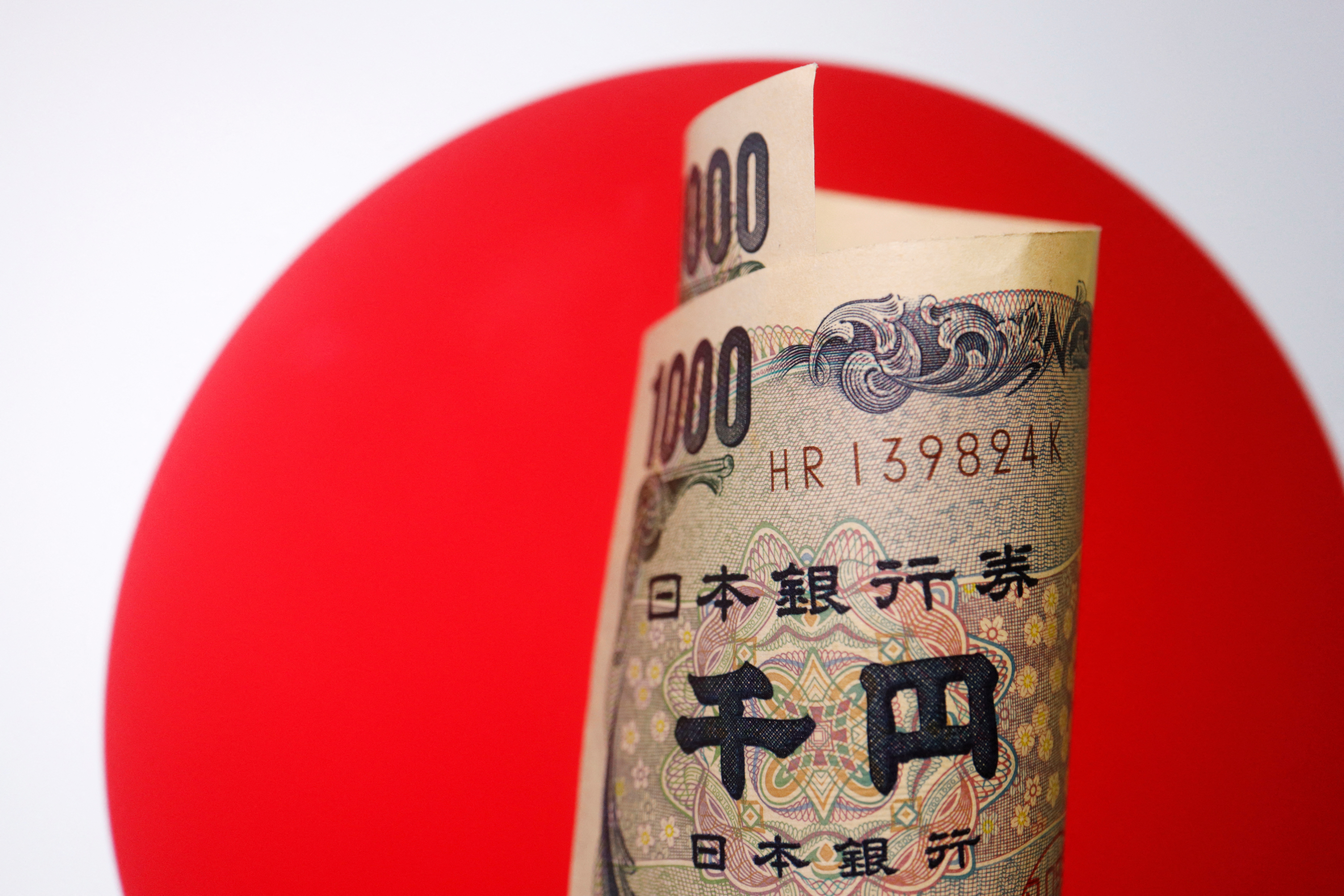
- G20 finance chiefs may discuss currency moves next week
- Finance minister warns against excessive yen volatility
- Suzuki declines to say if Tokyo preparing to intervene
- Renewed yen slide complicates BOJ's rate hike path
WIDENING YIELD GAP
Get a look at the day ahead in Asian and global markets with the Morning Bid Asia newsletter. Sign up here.
Reporting by Leika Kihara and Satoshi Sugiyama; Additional reporting by Yoshifumi Takemoto and Kantaro Komiya; Editing by Tom Hogue and Shri Navaratnam
Our Standards: The Thomson Reuters Trust Principles. New Tab , opens new tab

Sri Lanka's government rejected a proposal from its international bondholders on Tuesday on restructuring the more than $12 billion the country owes to them.

Markets Chevron
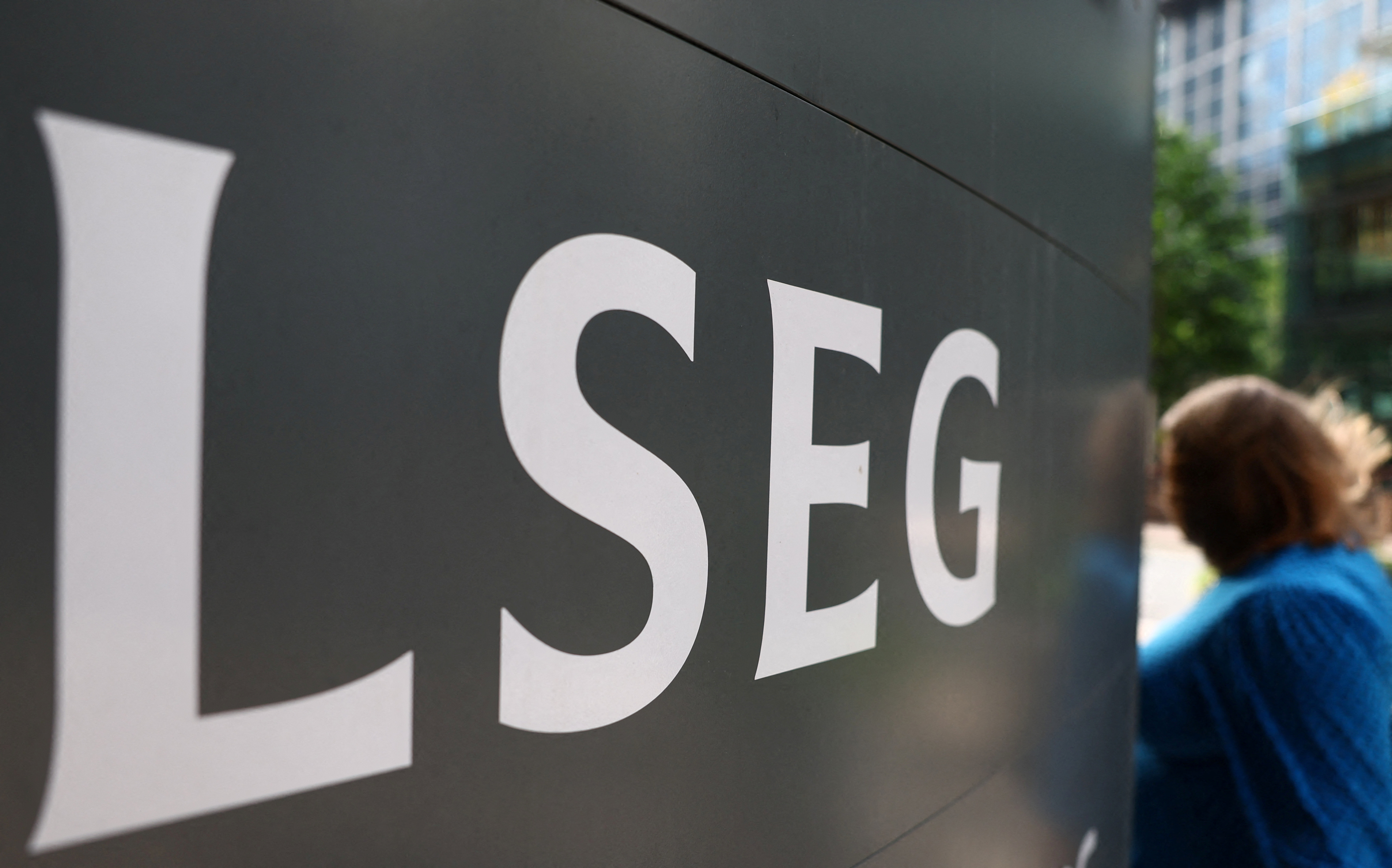
US stocks waver as rising Treasury Yields, Middle East tensions cap gains
Wall Street struggled for gains on Tuesday as rising U.S. Treasury yields and elevated geopolitical worries counteracted a generally positive string of first-quarter corporate results.

The International Monetary Fund upgraded its 2024 view for economic output growth in Latin America and the Caribbean to 2.0% from its January estimate of 1.9%, though it still expects a slowdown, the fund said Tuesday in its latest World Economic Outlook.

We've detected unusual activity from your computer network
To continue, please click the box below to let us know you're not a robot.
Why did this happen?
Please make sure your browser supports JavaScript and cookies and that you are not blocking them from loading. For more information you can review our Terms of Service and Cookie Policy .
For inquiries related to this message please contact our support team and provide the reference ID below.

IMAGES
VIDEO
COMMENTS
The official Japanese currency is the Japanese yen, represented by the currency code JPY and the currency symbol, ¥. Locally in Japan, yen is pronounced " en " in Japanese and often accompanied by its kanji, 円, in everyday use. The Japanese yen is available in 10 denominations, including six coins and four banknotes that you can read ...
Money. The Japanese currency is the yen (円, en). One yen corresponds to 100 sen; however, sen are not used in everyday life anymore, except in stock market prices. Bills come in 1,000 yen, 2,000 yen (very rare), 5,000 yen and 10,000 yen denominations. Coins come in 1 yen, 5 yen, 10 yen, 50 yen, 100 yen and 500 yen denominations.
When Japan finally opens its doors to vaccinated tourists on Oct. 11, many travelers are going to find great bargains. The yen has lost about 20% of its value against the dollar this year, making ...
The ATMs in Japan have fees depending on the time and day of the week, so take note before withdrawing money. The fees can range from 0 yen to 220 yen. Also, check with your bank regarding foreign transaction fees, maximum withdrawal limits, and other ATM fees. For example, my bank has a maximum withdrawal limit of $600 per day and charges a 1% ...
Travel money guide: Japan Despite living in a world where everyone is paying with credit or debit cards, Japan is still very much a cash society. By. Megan Horner. Updated. ... A guide to the Japanese yen. Since the introduction of the yen, the denominations have ranged from 10 yen to 10,000 yen. The following is a brief description of the ¥ ...
Yen (JPY) comes in bills of 1,000 yen, 2,000 yen, 5,000 yen and 10,000 yen, and coins of 1 yen, 5 yen, 10 yen, 50 yen, and 500 yen. Carrying a purse for your Japanese coins throughout your stay in Japan is a good idea since the value of them (and weight in your wallet) soon adds up. While the 10,000 yen note is equivalent to around 100 dollars ...
The value of the yen fluctuates like the dollar. But, to give you a sense of what a meal costs in Japan, you can buy a bowl of ramen for 500 to 1,000 yen. Although, a dinner might cost you about 3,000 yen. A subway ride costs about 200 yen. A taxi ride averages about 700 yen. To rent a bike for a day costs about 1,500 yen.
You will need to use Japanese currency when traveling in Japan. This article provides basic information regarding the Japanese yen: denominations currently in use, typical exchange rates, and more. Japan uses the Japanese yen, with the international symbol being ¥. Currently, there are 1,000 yen, 2,000 yen, 5,000 yen and 10,000 yen banknotes ...
When it comes to Japanese currency, the unit of exchange is the yen (¥). Understanding the yen's denominations and features is essential for handling money in Japan. Let's explore the basics: Yen Banknotes: The yen banknotes come in various denominations: ¥1,000, ¥2,000, ¥5,000, and ¥10,000.
Once China fully reopens, inbound spending from Chinese visitors has the potential to increase from 1.8 trillion yen in 2019 to 2.6 trillion yen — 0.5% of Japan's gross domestic product, said ...
Currency Converter is an exchange rate information and news app only and not a currency trading platform. The information shown there does not constitute financial advice. Conversion rates US Dollar / Japanese Yen. 1 USD. 154.16500 JPY. 5 USD.
USD - US Dollar. To. JPY - Japanese Yen. 1.00 US Dollar =. 153 .25166 Japanese Yen. 1 JPY = 0.00652521 USD. We use the mid-market rate for our Converter. This is for informational purposes only. You won't receive this rate when sending money.
JPY - Japanese Yen. To. USD - US Dollar. 1 Japanese Yen =. 0.00 6531185 US Dollars. 1 USD = 153.112 JPY. We use the mid-market rate for our Converter. This is for informational purposes only. You won't receive this rate when sending money.
Order a travel money card for your Japanese vacation is simple. Step 1. Create your free Wise account. Order your Japanese yen travel card for a one-time fee of $9 USD. Step 2. Choose currencies. Activate Japanese yen or any of the other 40+ currencies that we offer, and top your account up. Step 3.
Importance of the Japanese Yen The Japanese Yen is the third most traded currency in the world, and the most heavily traded currency in Asia. Due to its relatively low interest rates, the Japanese Yen is often used in carry trades with the Australian Dollar and the US Dollar.A carry trade is a strategy in which a currency with low interest rate is sold in order to buy a currency with a higher ...
Japan uses six different coins: the 500, 100, 50, 10, 5, and 1 yen. The smallest coin is the 1 Yen coin. It is roughly comparable to 1 cent. This is made of aluminum and shows a young tree on the back and the Japanese characters for the country Japan, 日本国 (nihon koku). The 5 Yen coin has a hole in the middle and shows a sheaf of rice in ...
Transportation and Tours Price; 7-day Japan Rail Pass (Ordinary) from 50,000 yen: Tokyo Metro 24-hour ticket: 600 yen: Common 1-day ticket for Tokyo Metro & Toei Subway
The official site of Japan National Tourism Organization is your ultimate Japan guide with tourist information for Tokyo, Kyoto, Osaka, Hiroshima, Hokkaido and other top Japan holiday destinations. We offer travel information to make your Japan travel more comfortable and enjoyable.
Follow the steps below to withdraw cash in Japan: Find an ATM. Insert your card. Select your language. Click on the option to make a withdrawal. If you're given an option for the exchange rate, select the option "Without Conversion", as you'll get a better exchange rate this way.
06. Airport kiosks. 07. Summary: Where to buy Japanese Yen in the USA. We recommend these services as the best Japanese Yen travel money cards in the USA: Revolut: Hold 30+ currencies with no foreign fees and no ATM fees on $1,000 of withdrawals per month (though fair use limits and weekend surcharges may apply).
Currency Converter is an exchange rate information and news app only and not a currency trading platform. The information shown there does not constitute financial advice. Conversion rates Japanese Yen / US Dollar. 1 JPY. 0.00652 USD. 100 JPY. 0.65247 USD. 500 JPY. 3.26233 USD.
The Japanese yen is 35% cheaper against the dollar than it was in April 2019. Japan's delicious food, fascinating culture, and delightful hospitality make it a wonderful country for Americans to ...
Medium budget: 500 - 1000 yen per day. Many coffee shops and some restaurants in shopping areas and around train stations offer breakfast sets for around 500 to 1000 yen. High budget: above 1000 yen per day. Hotel breakfasts and breakfast buffets will usually cost you more than 1000 yen.
The estimated total cost for 2 weeks in Japan is about $7,856 or £5,986 for 2 people based on 2024 prices. How much cash should I bring to Japan for 2 weeks? A good rule of thumb is to have about 10,000 to 20,000 yen with you in cash at all times. For 2 weeks, ¥100,000 ($700, £550) was enough cash for us.
Japanese yen rate trend. Over the past 30 days, the Japanese yen rate is up 0.45% from 187.884 on 13 Mar to 188.729 today. This means one pound will buy more Japanese yen today than it would have a month ago. Right now, £750 is worth approximately ¥141,546.75 which is ¥633.75 more than you'd have got on 13 Mar.
The yen's slide against the dollar has revived anticipation of currency intervention. Japanese Finance Minister Shunichi Suzuki said he was watching currency moves closely, and that Tokyo is ...
The yen's fresh slide to a 34-year low complicates the Bank of Japan's deliberations on the timing of a next interest rate hike, as a resulting rise in import costs pushes up inflation but also ...
After hitting a fresh 34-year high of 153.32 yen overnight, the dollar stood at 153.18 yen in Asia on Friday. The Japanese currency has tumbled almost 8% against the dollar since the beginning of ...
April 1, 2024 at 11:40 PM PDT. Listen. 4:26. Japanese authorities would probably target a five-yen rally against the dollar if they decide to intervene in foreign exchange markets, according to ...
Currency Converter is an exchange rate information and news app only and not a currency trading platform. The information shown there does not constitute financial advice. Conversion rates Japanese Yen / US Dollar. 1 JPY. 0.00652 USD. 100 JPY. 0.65247 USD. 500 JPY. 3.26233 USD.